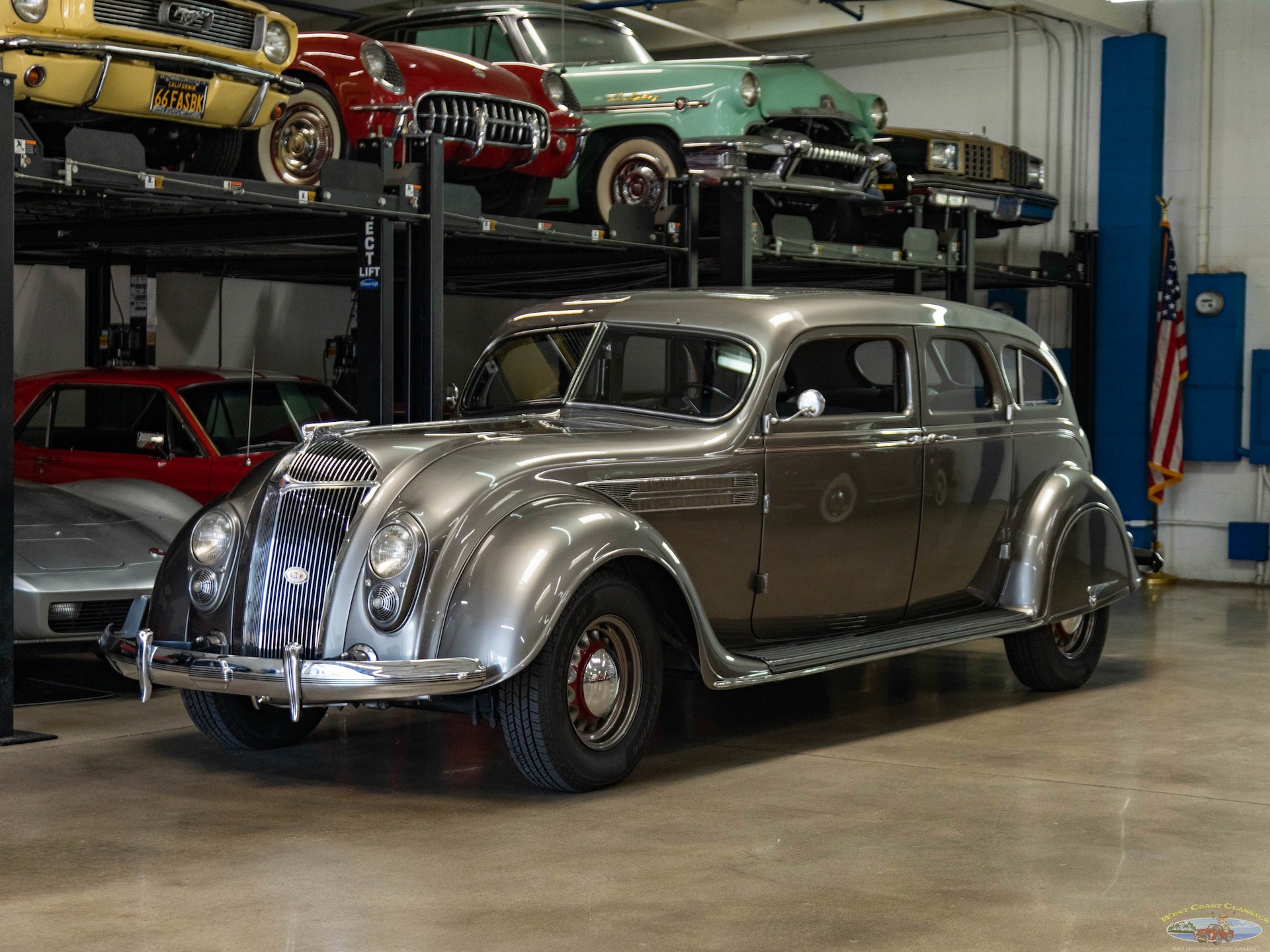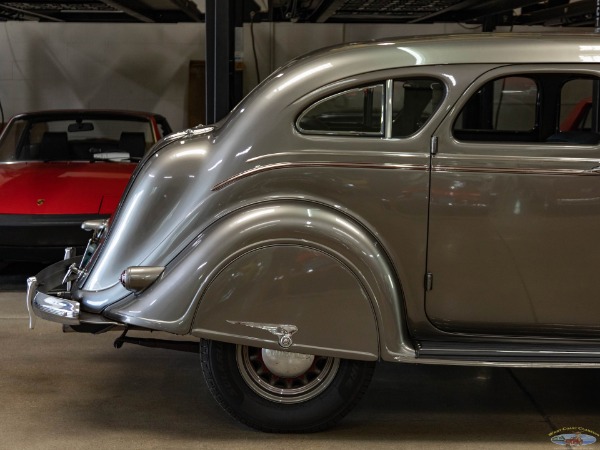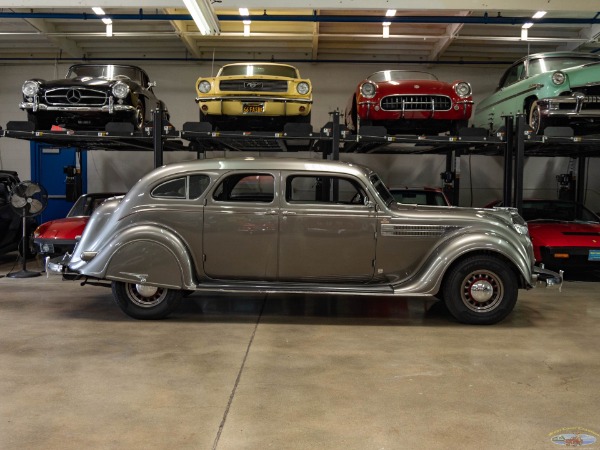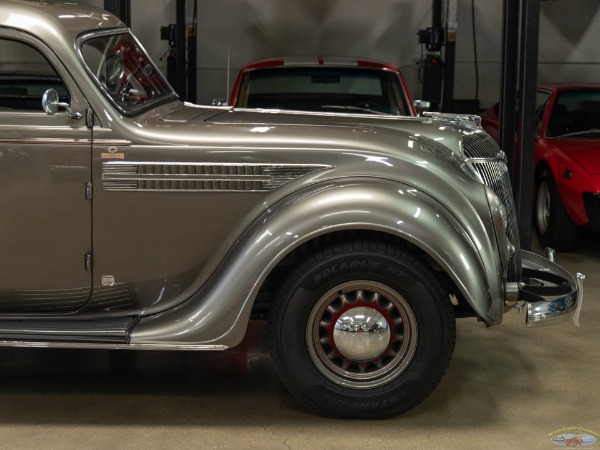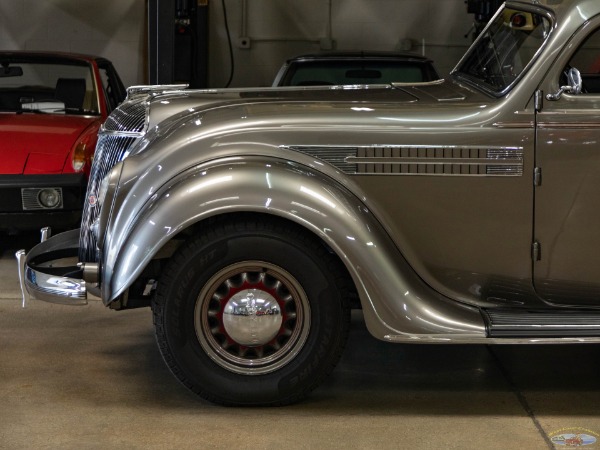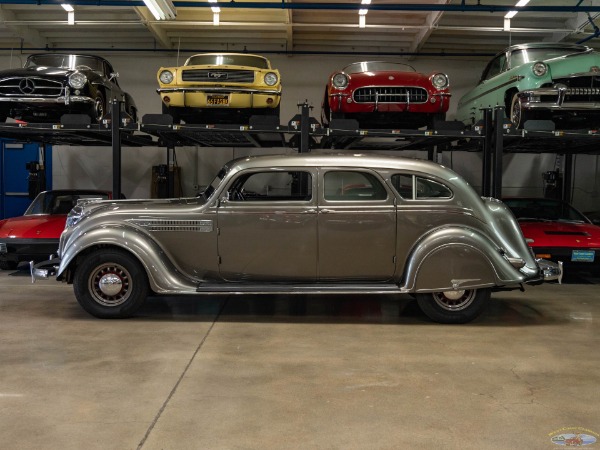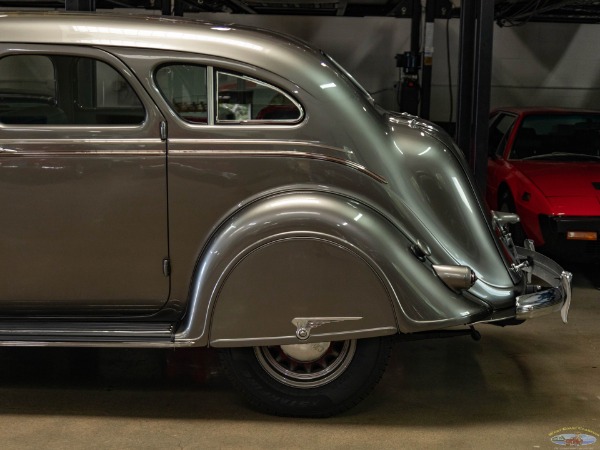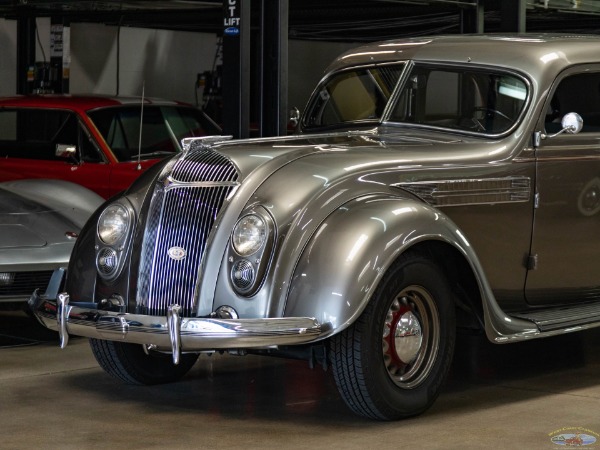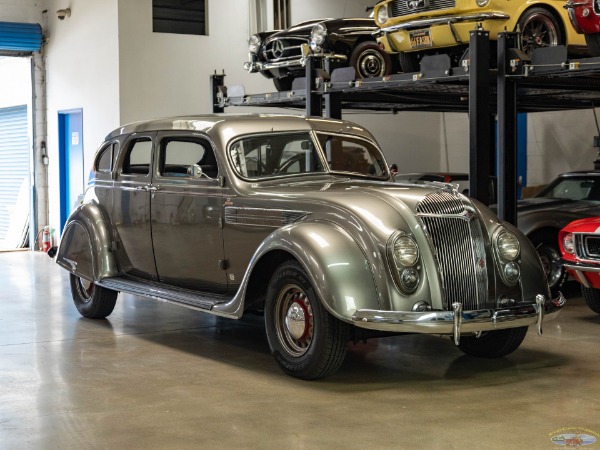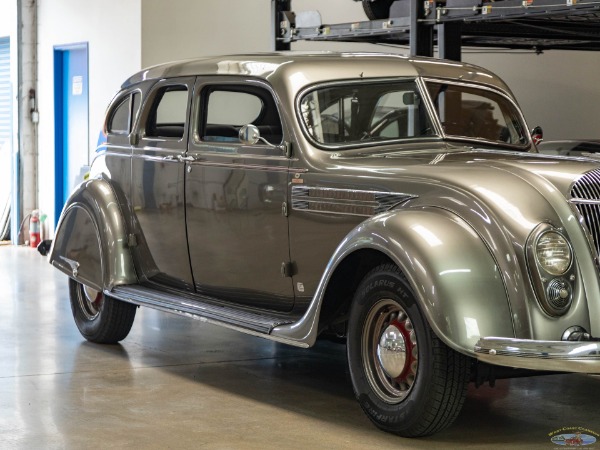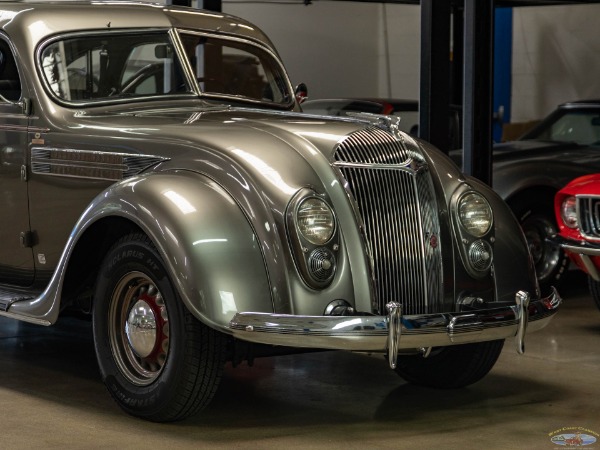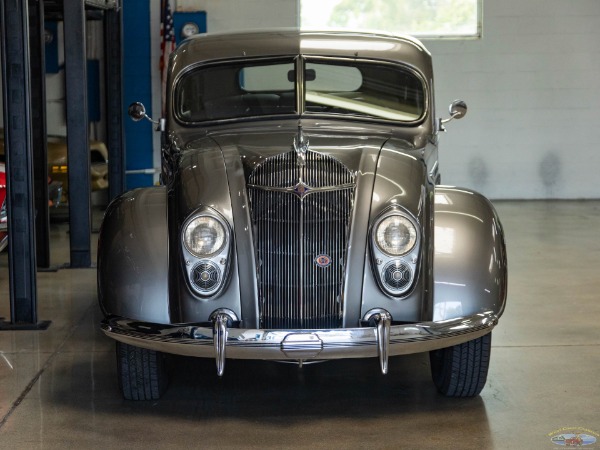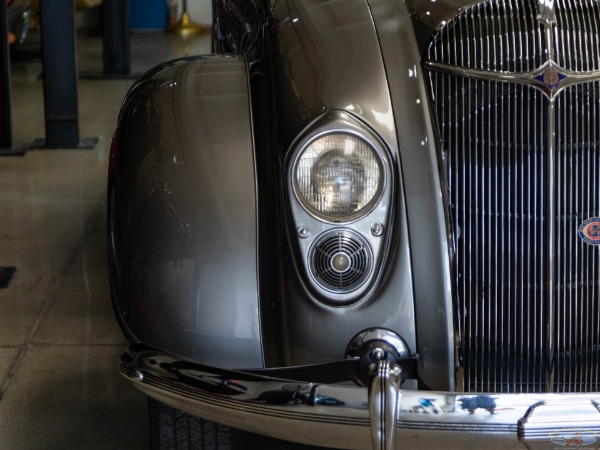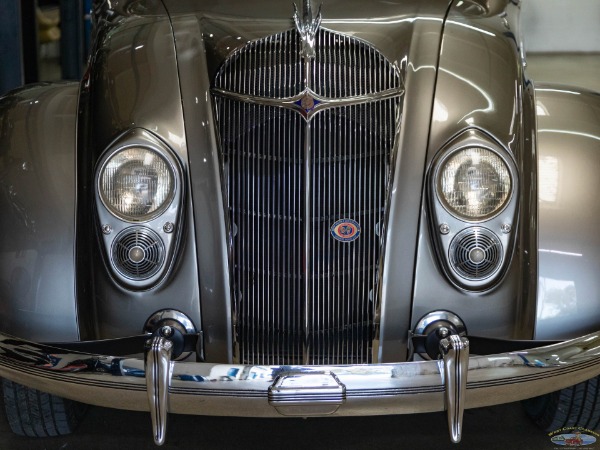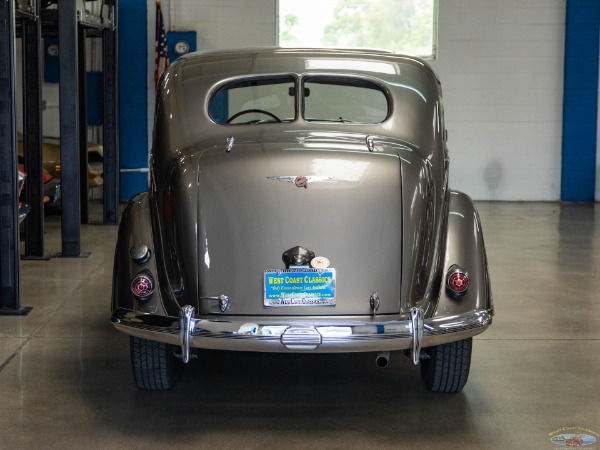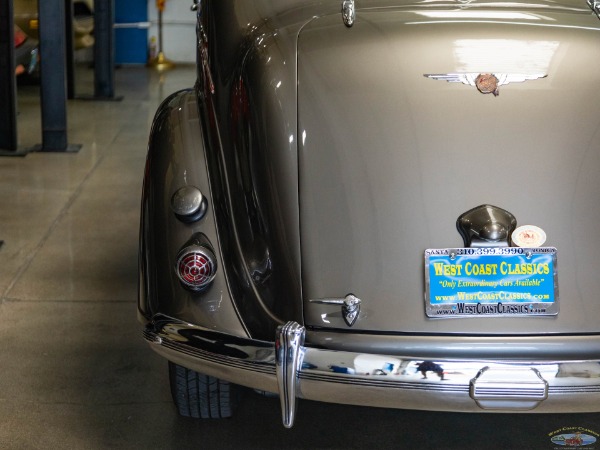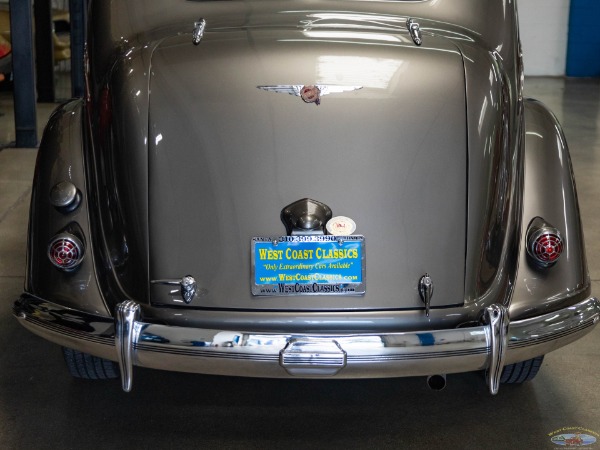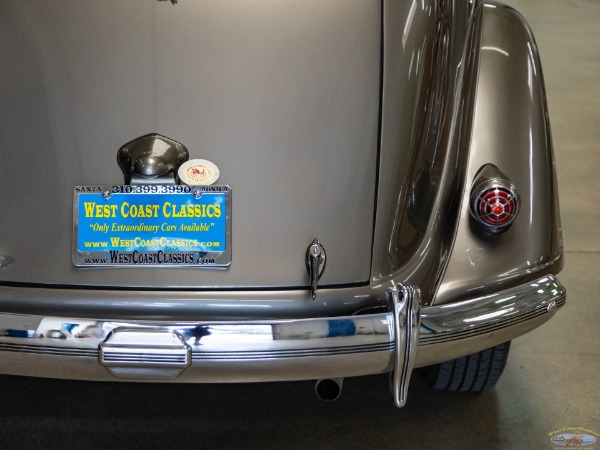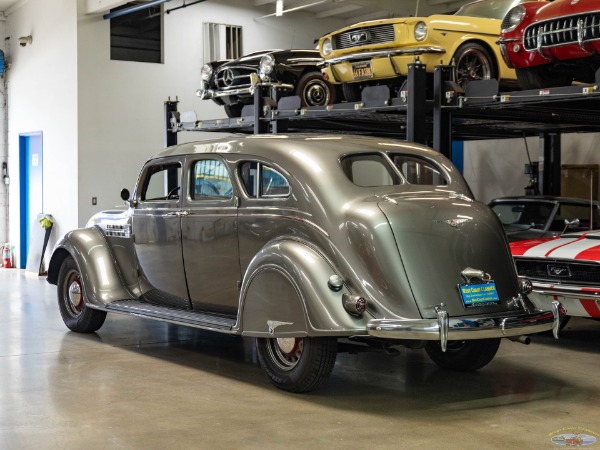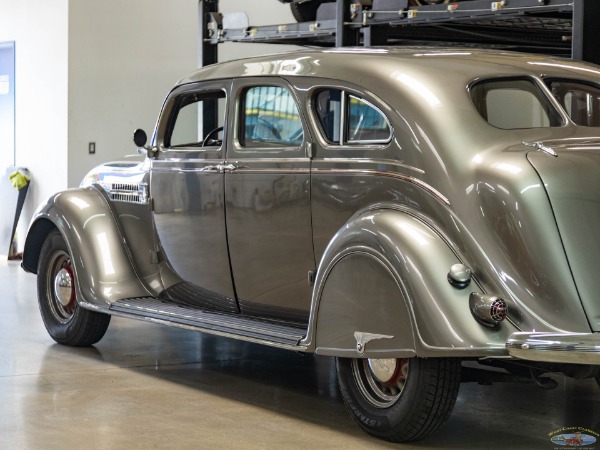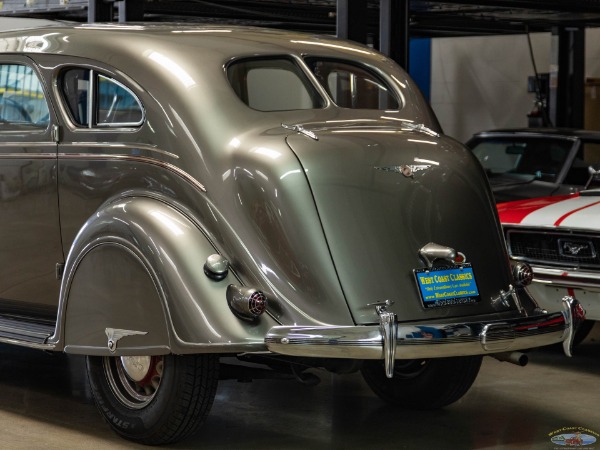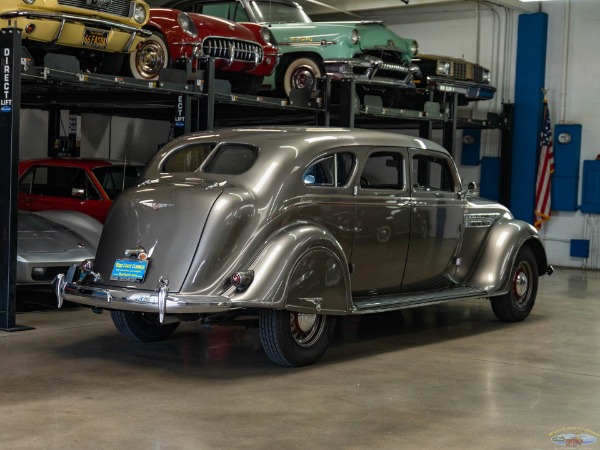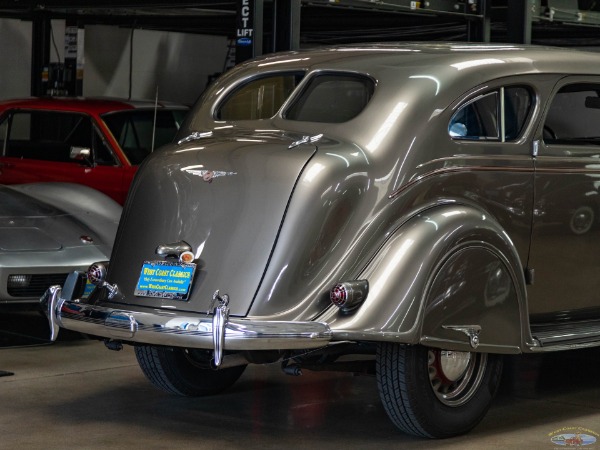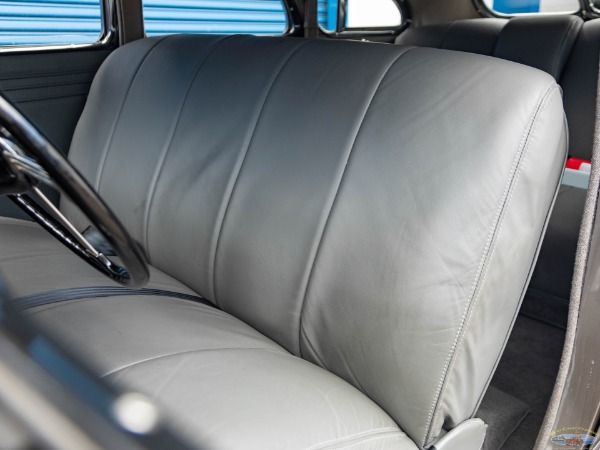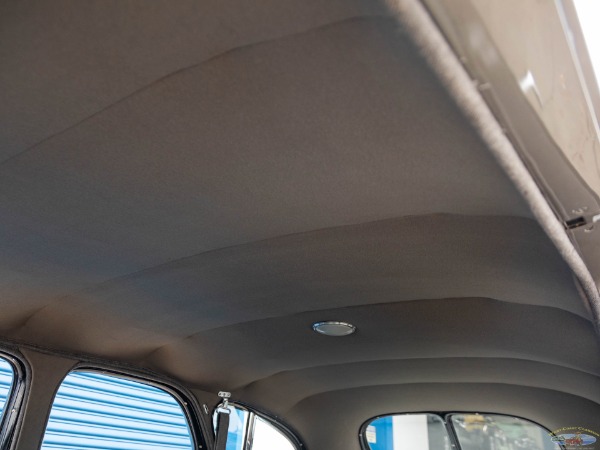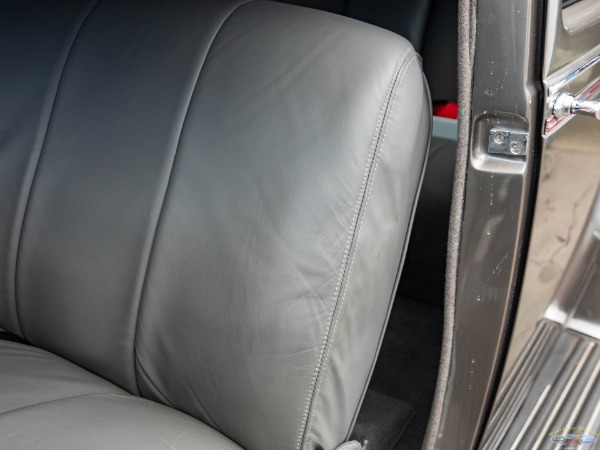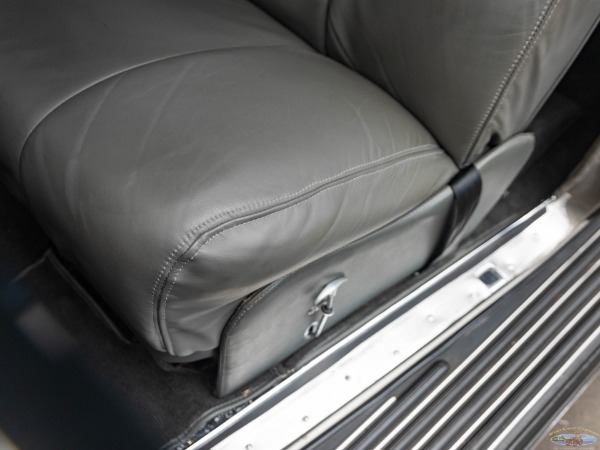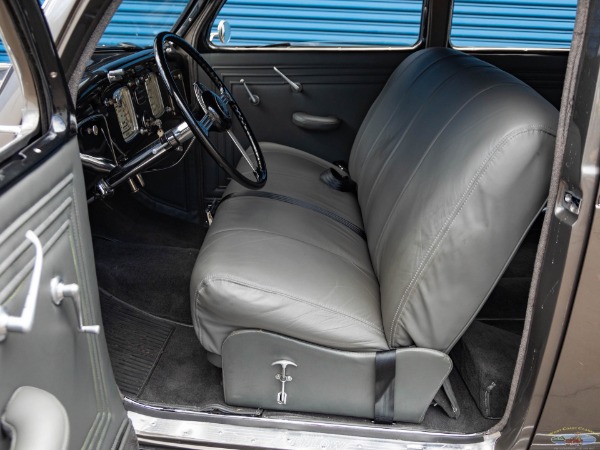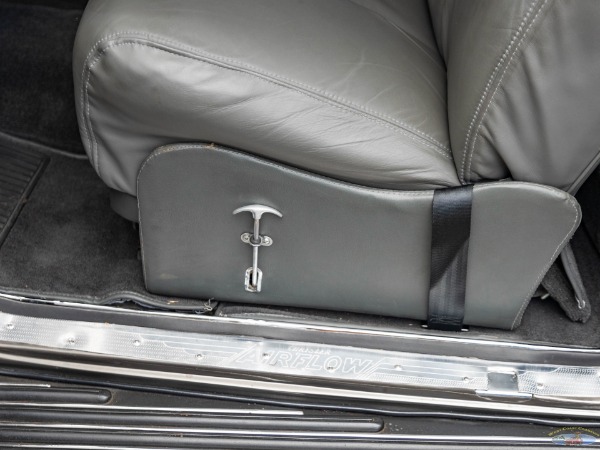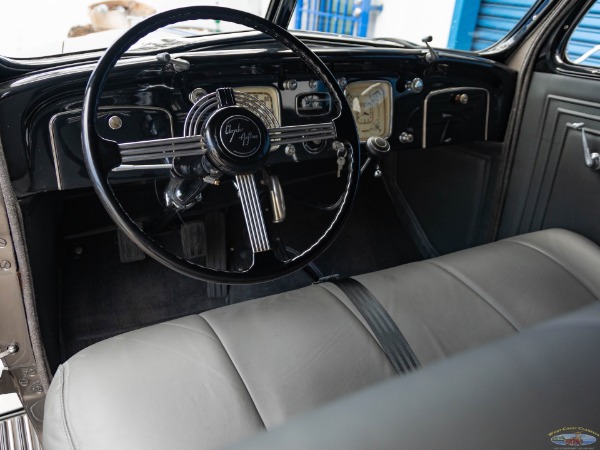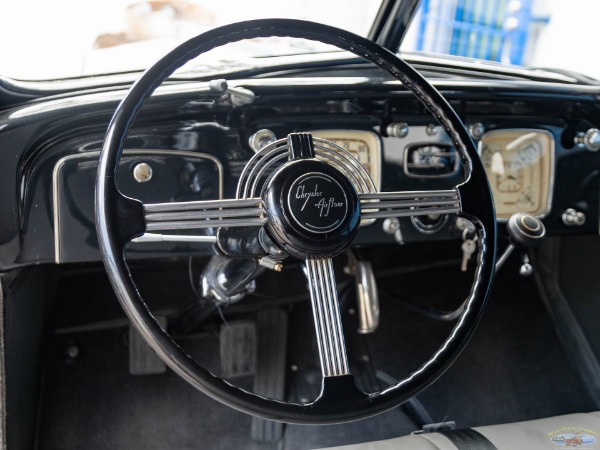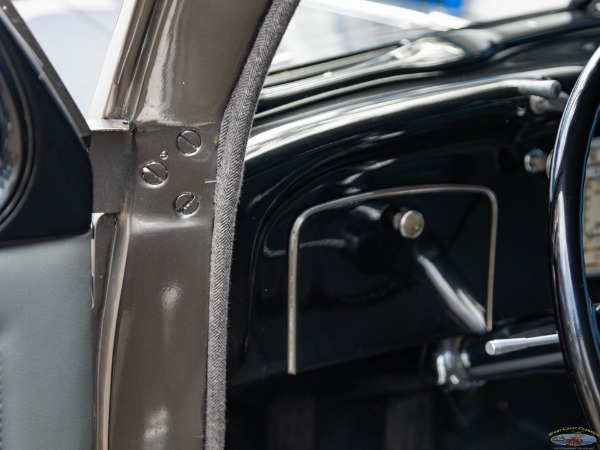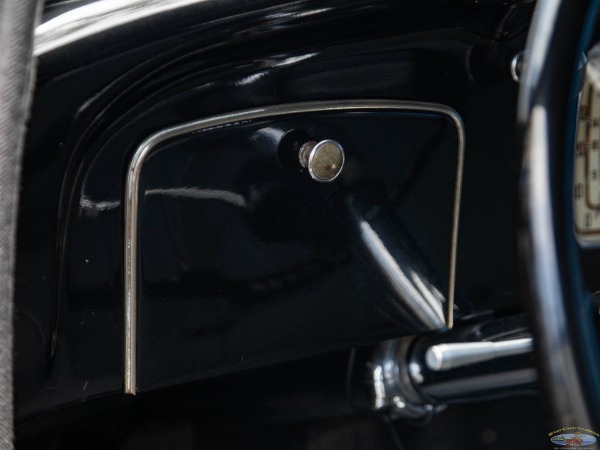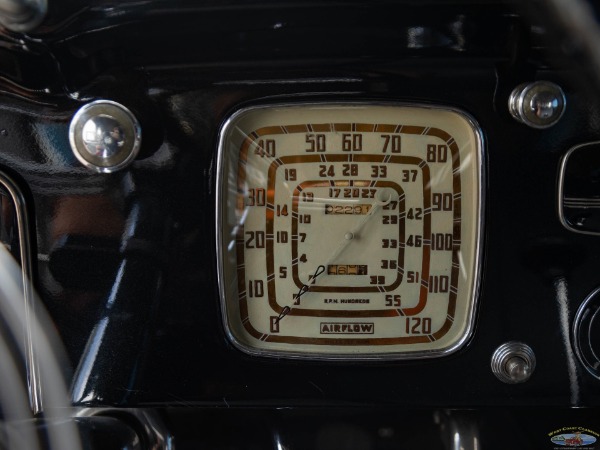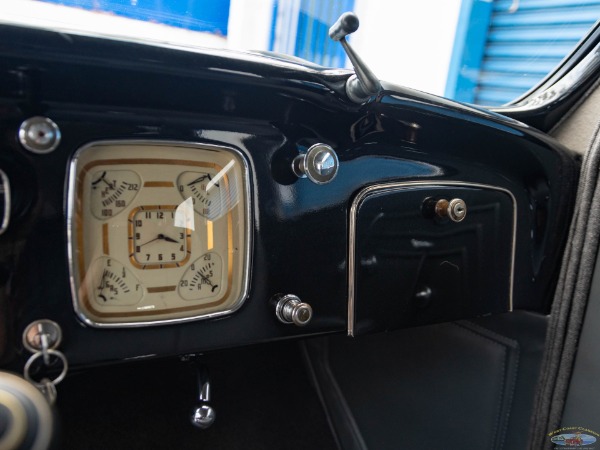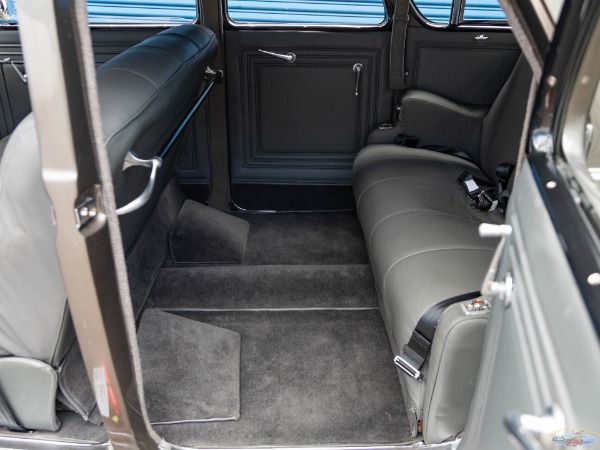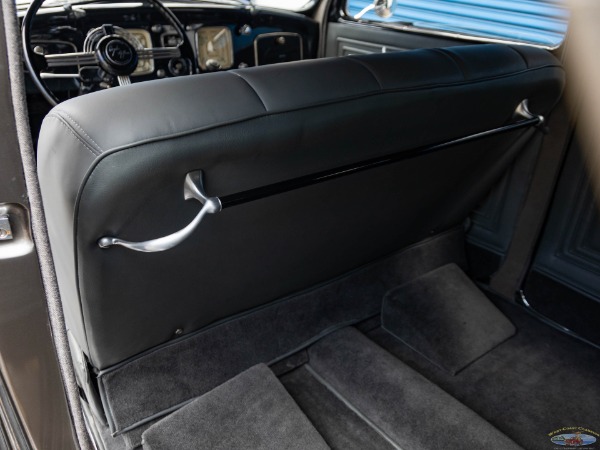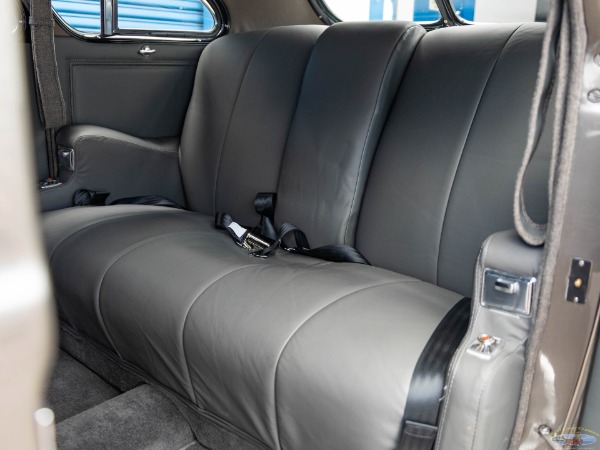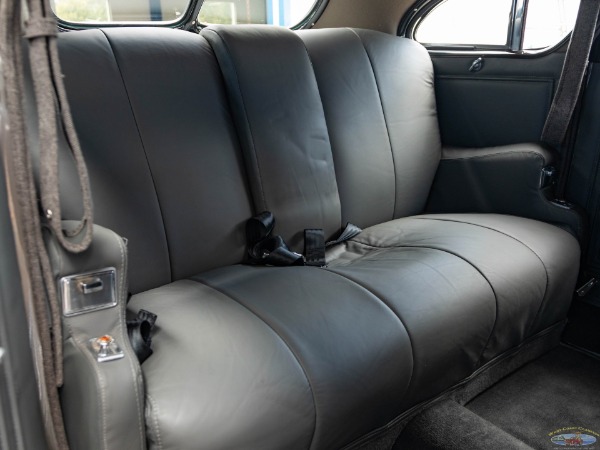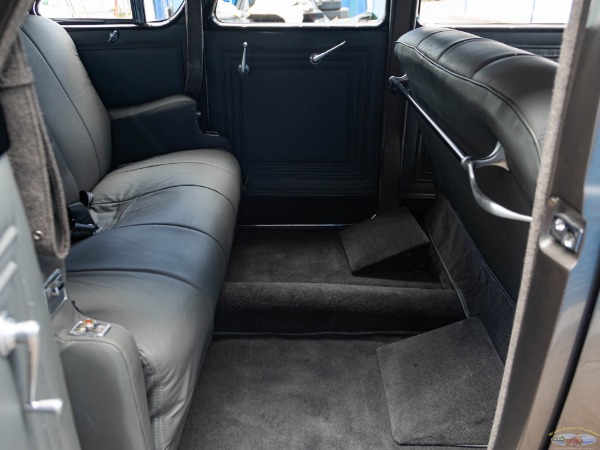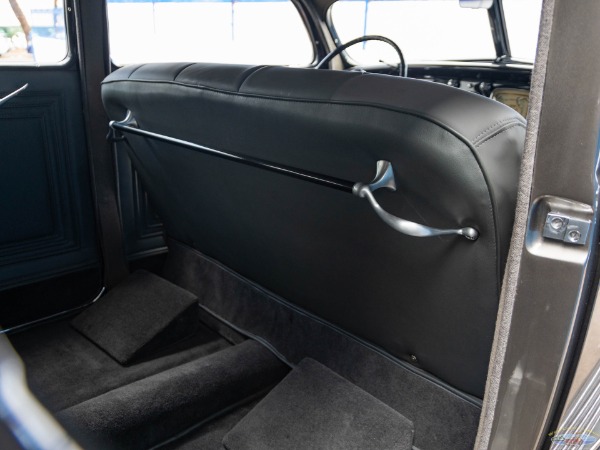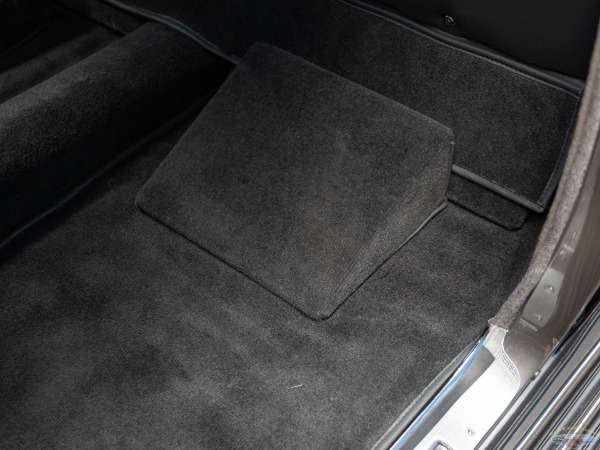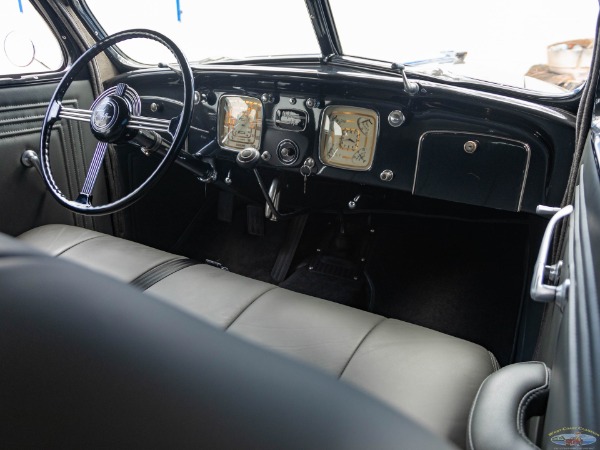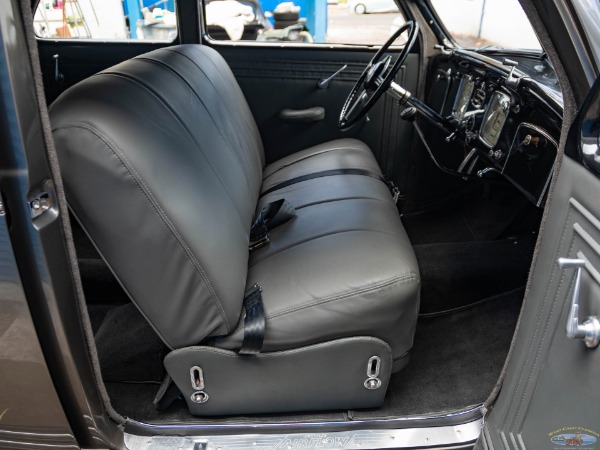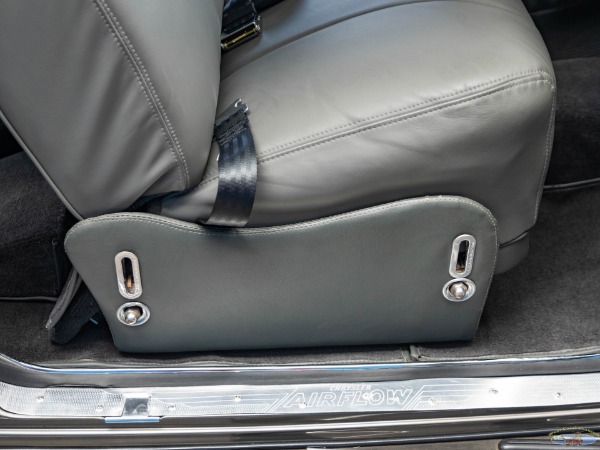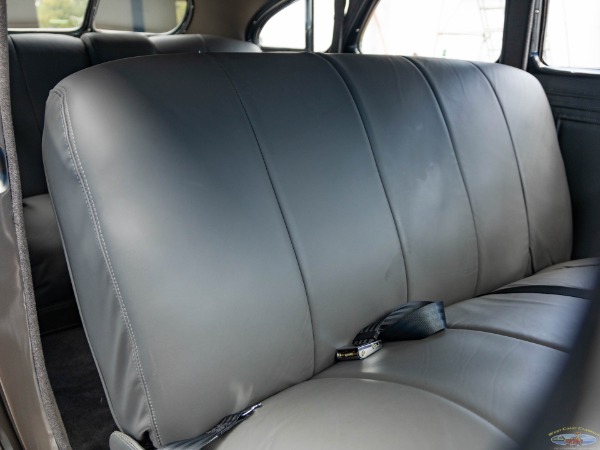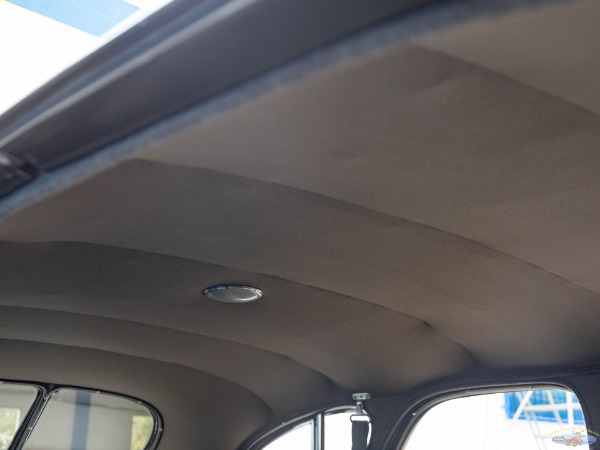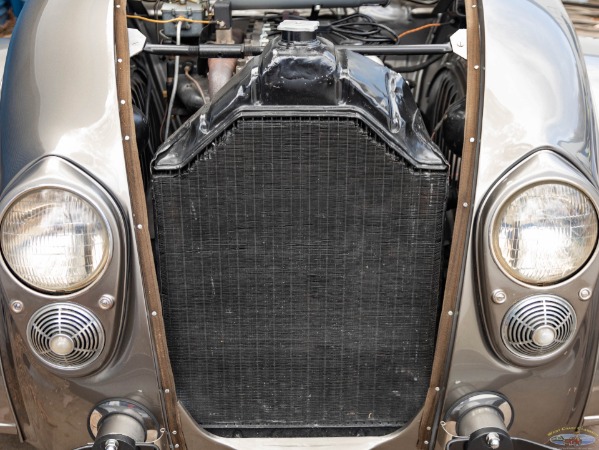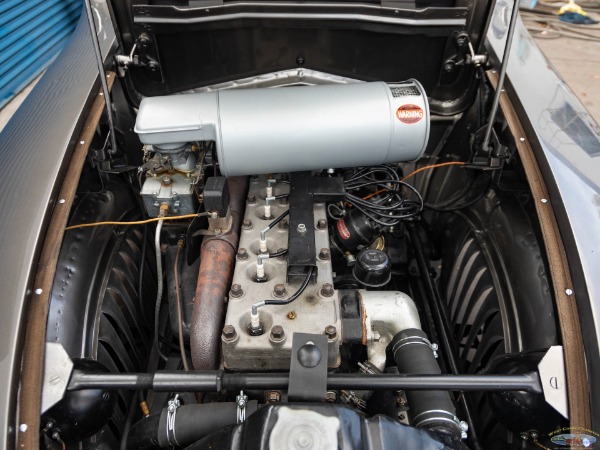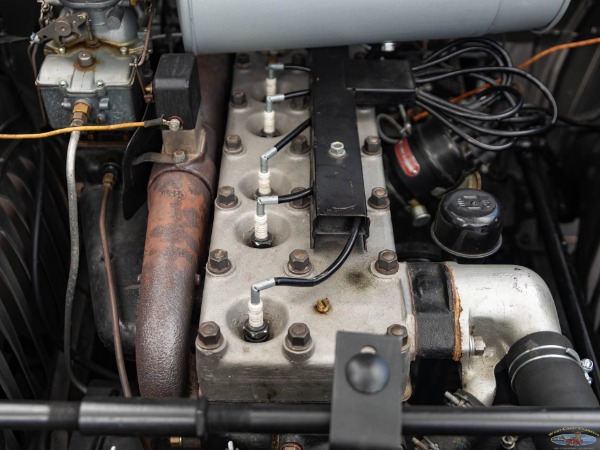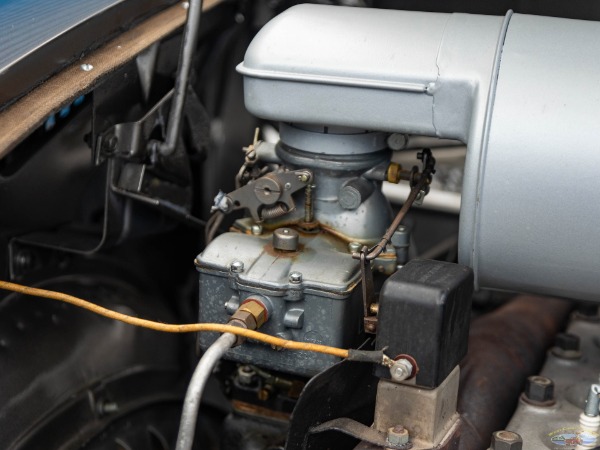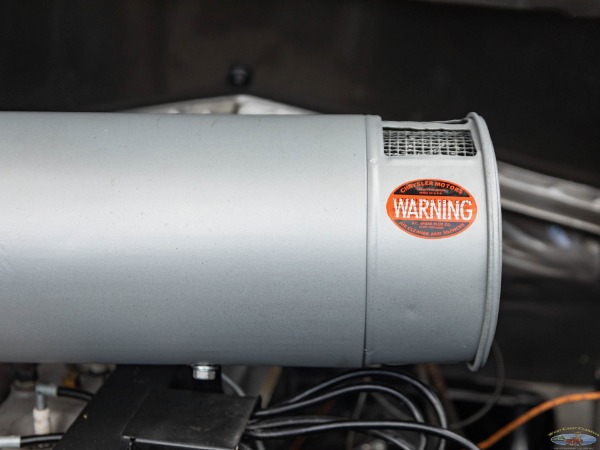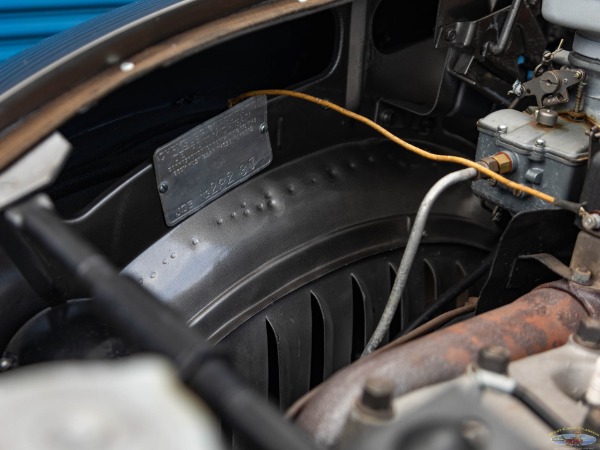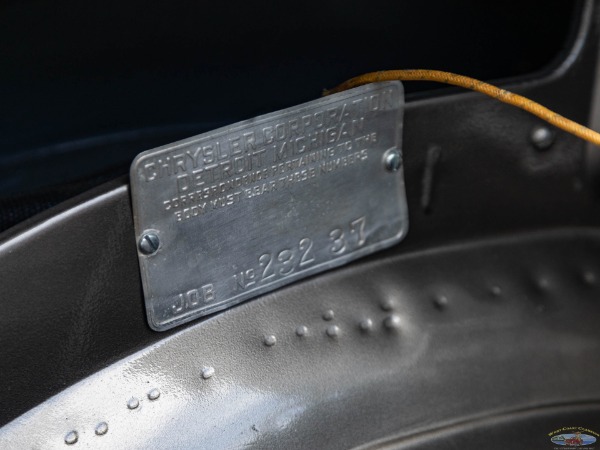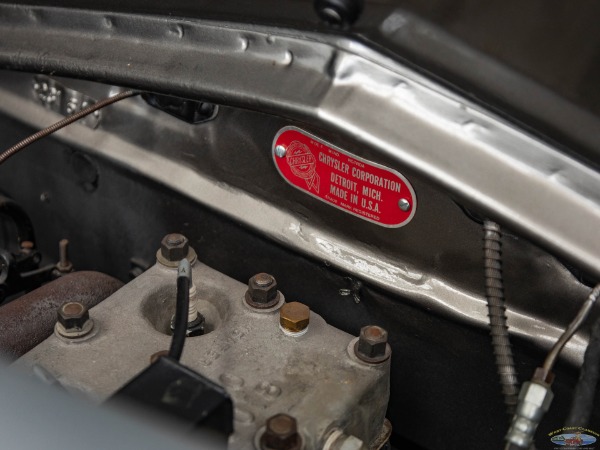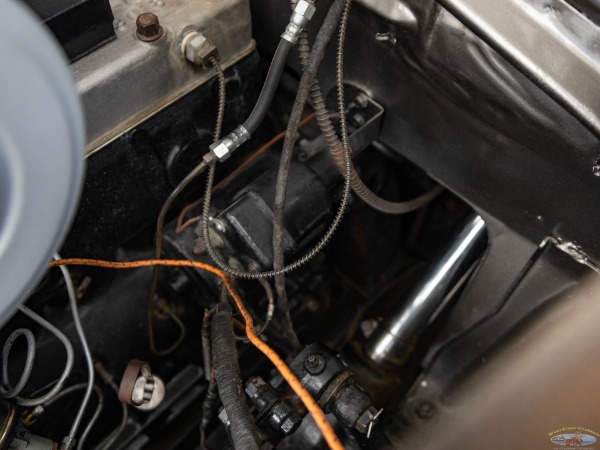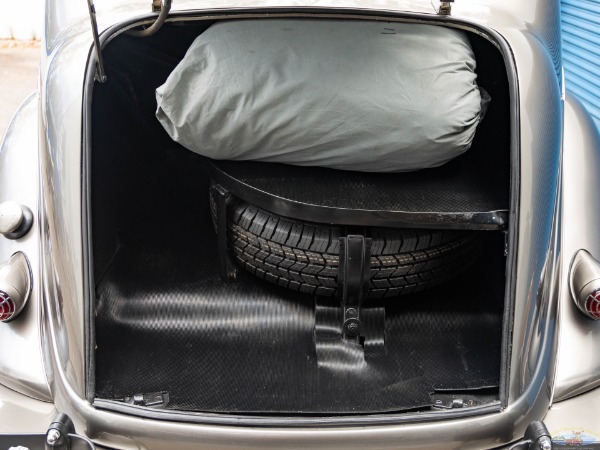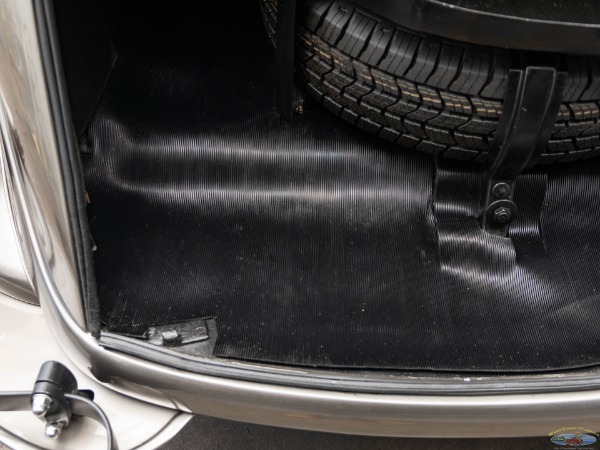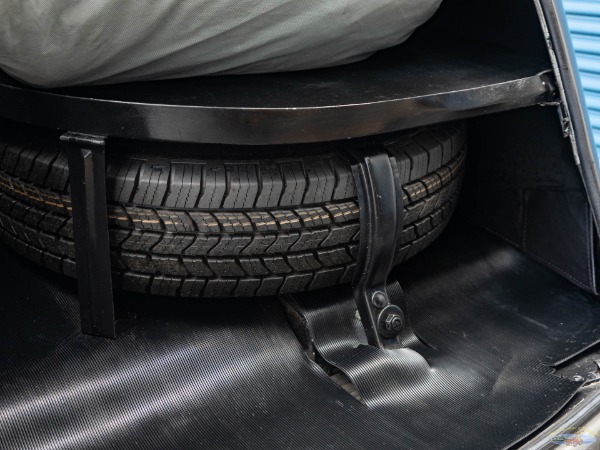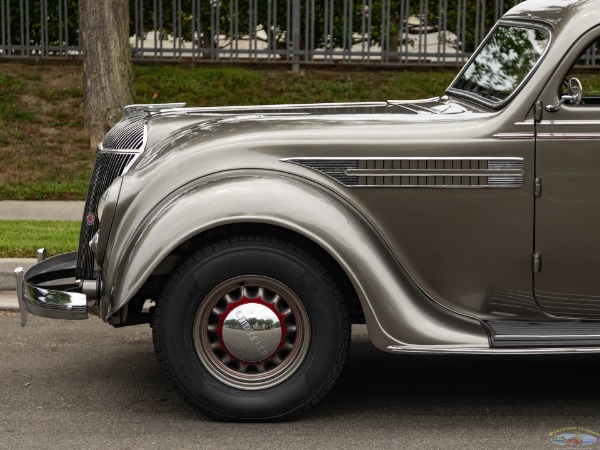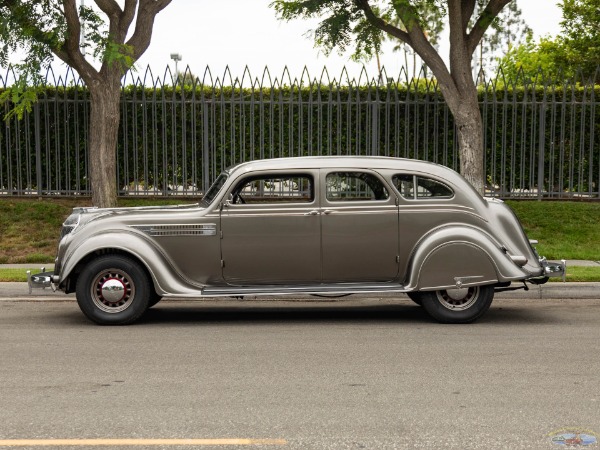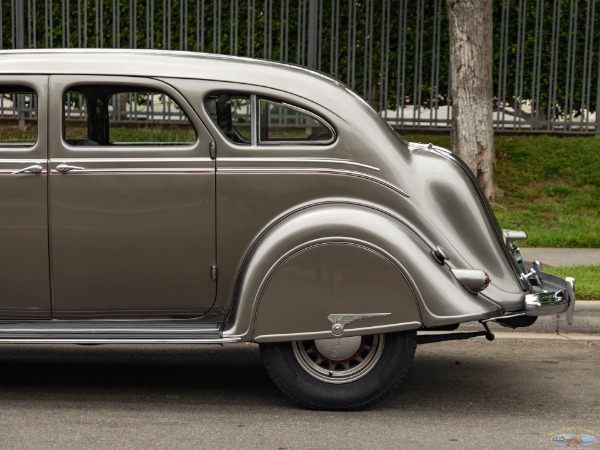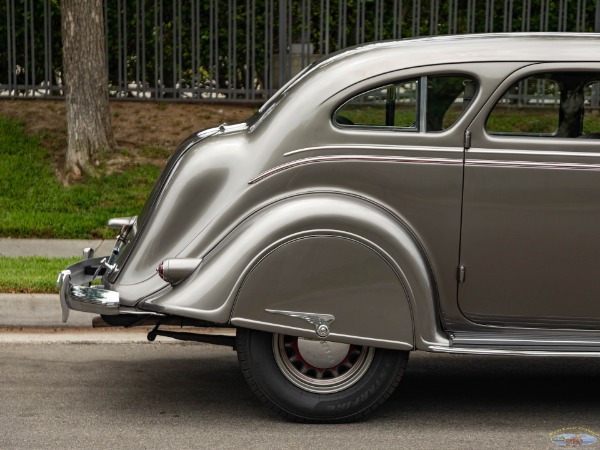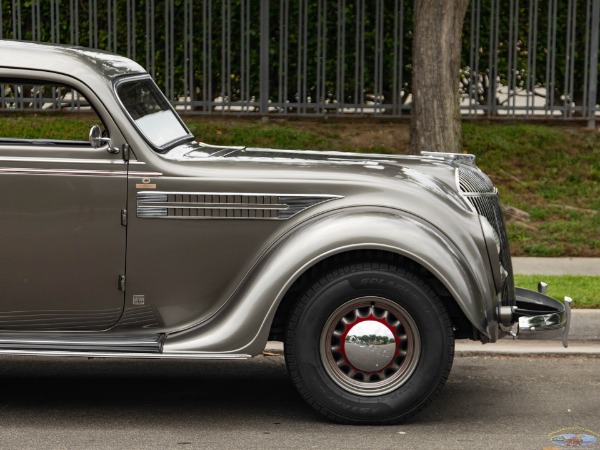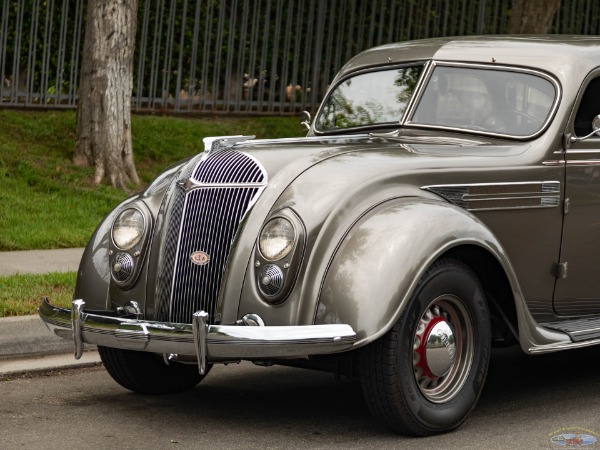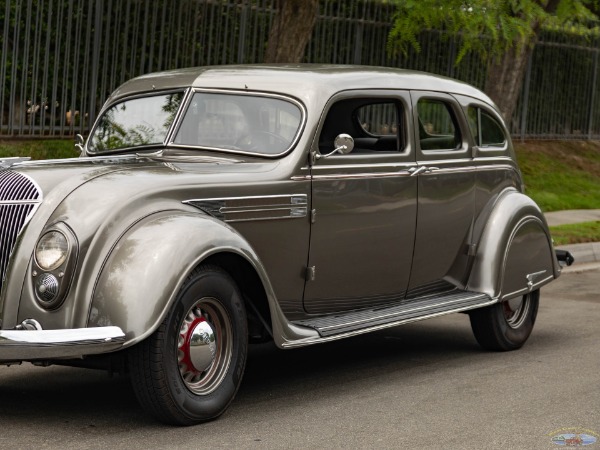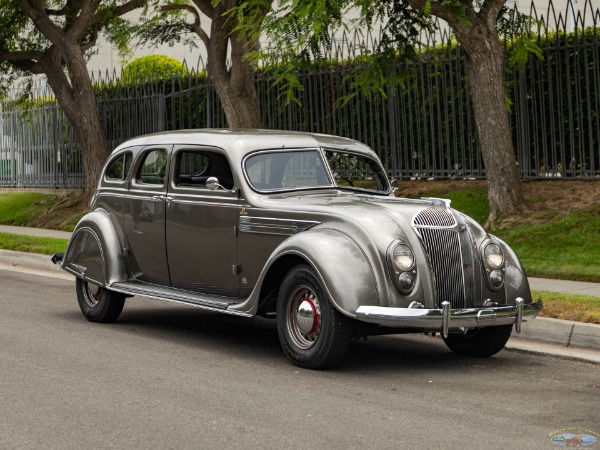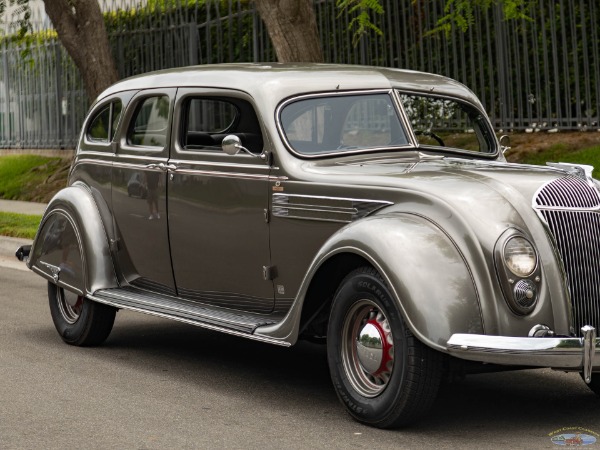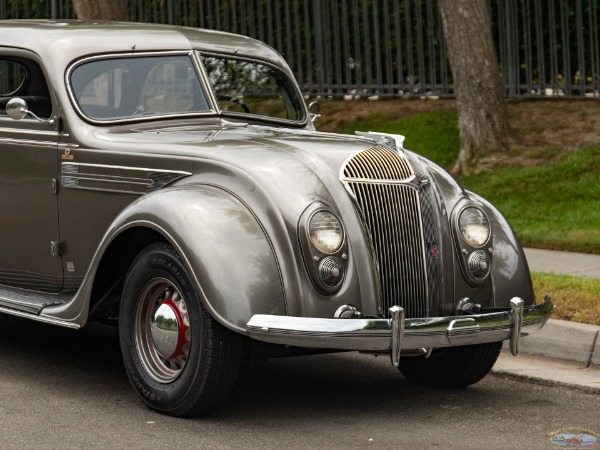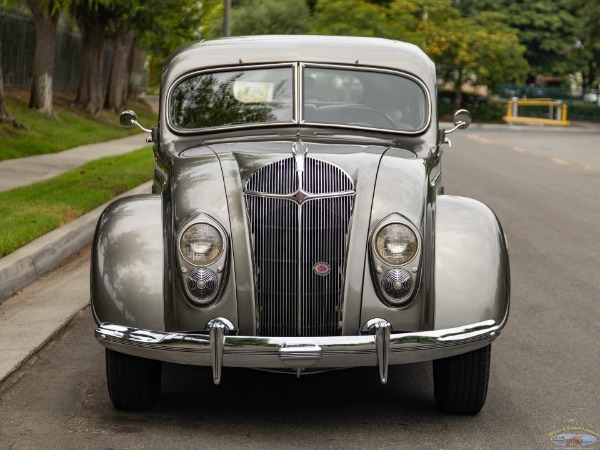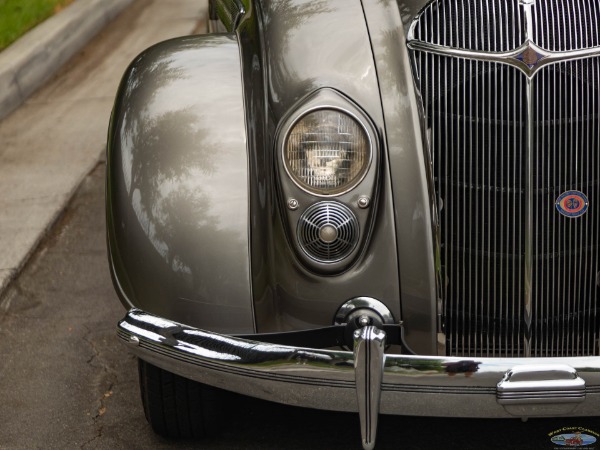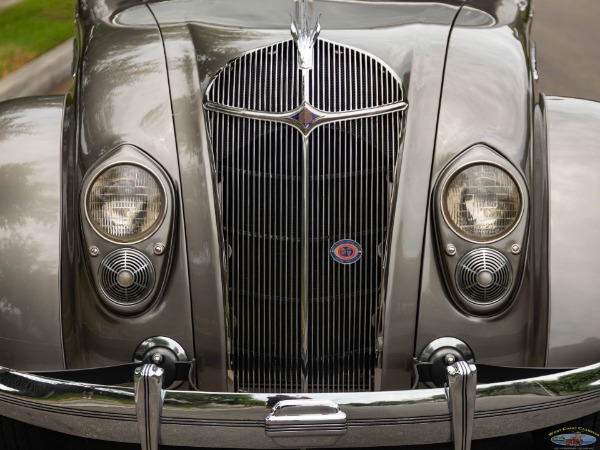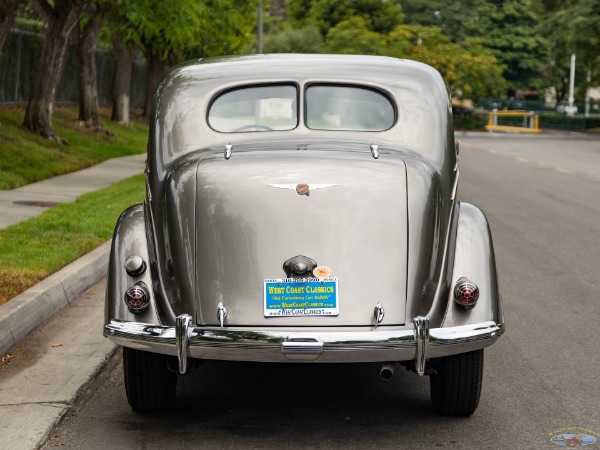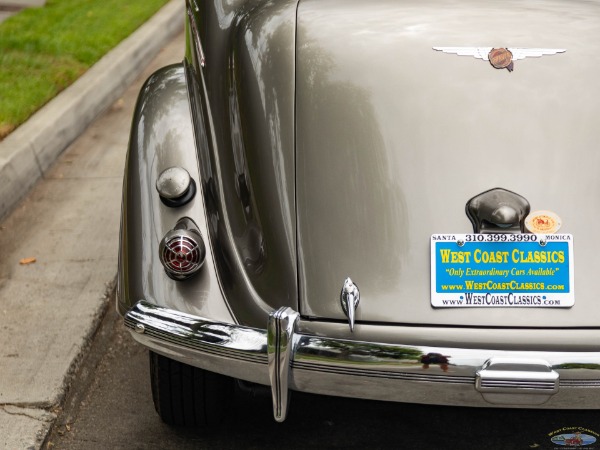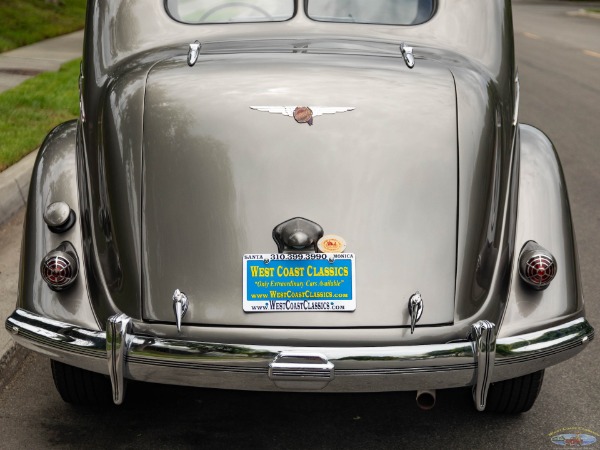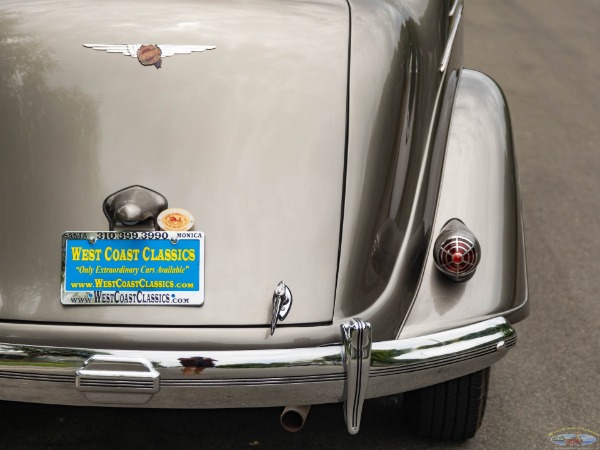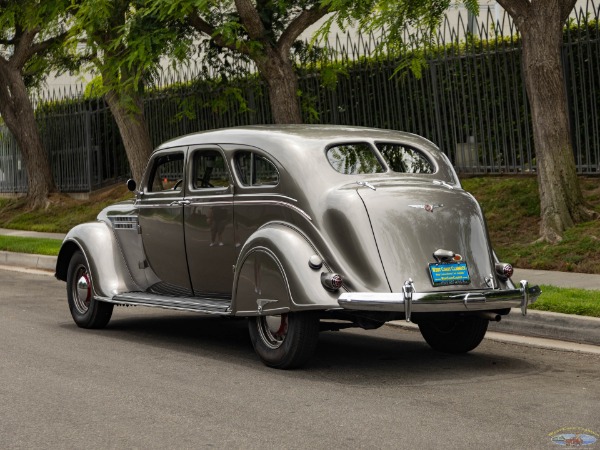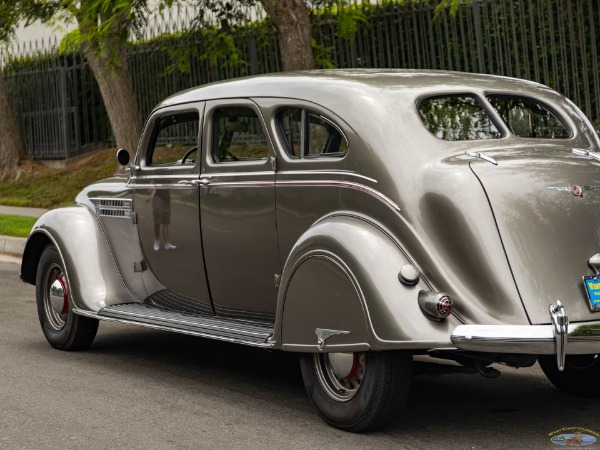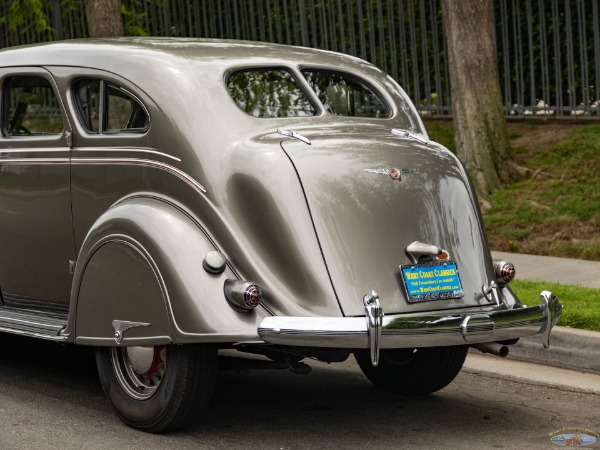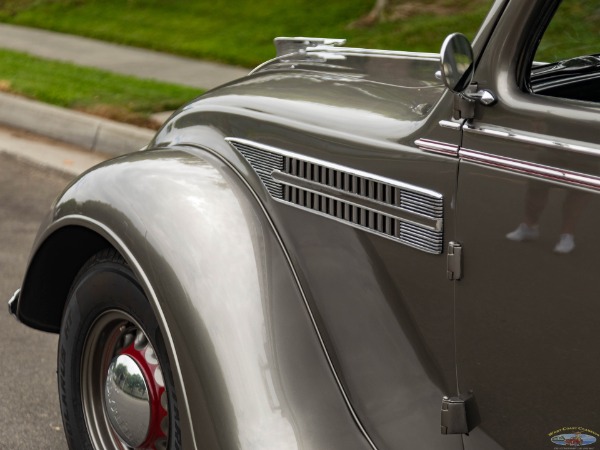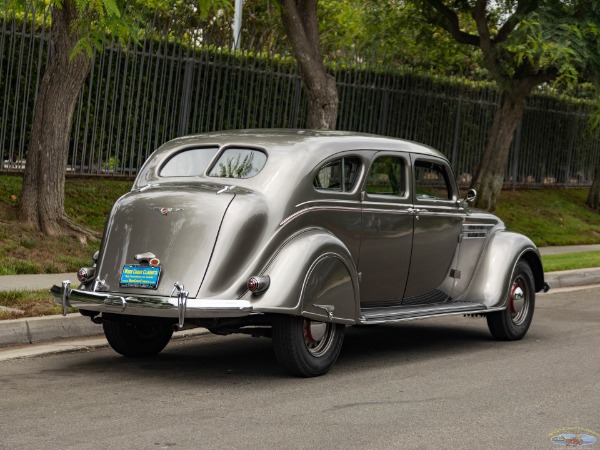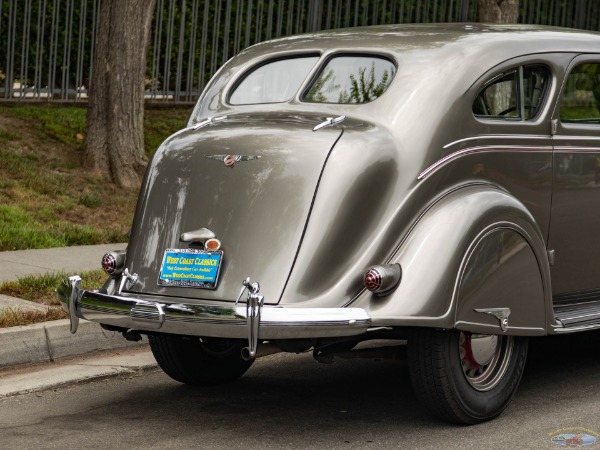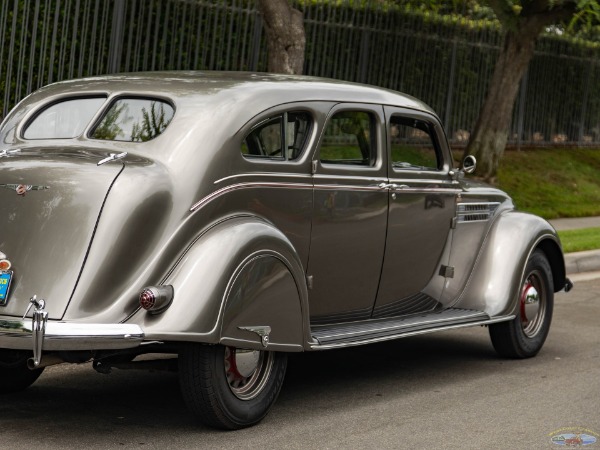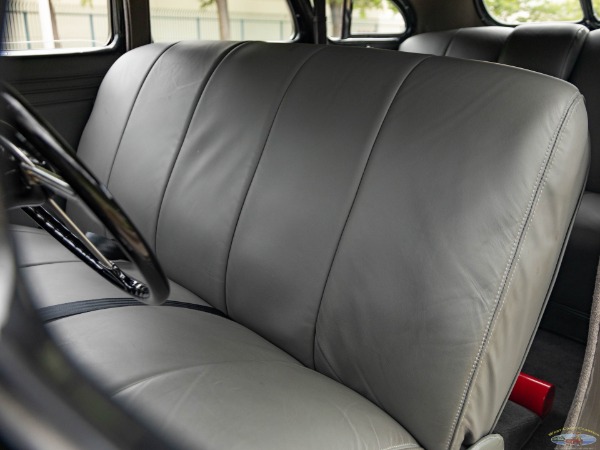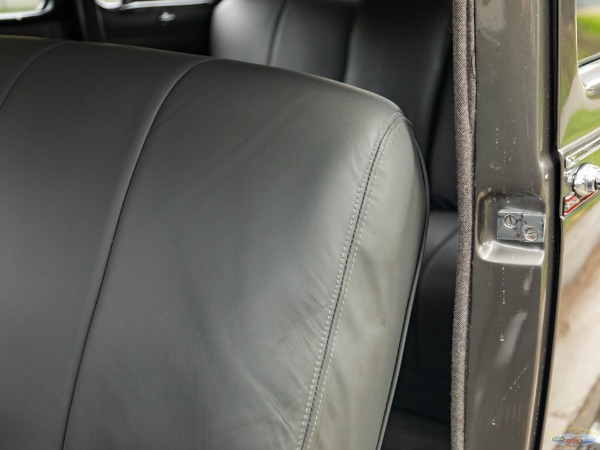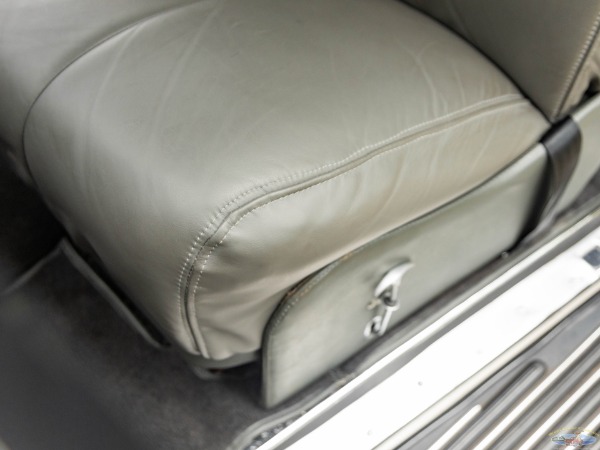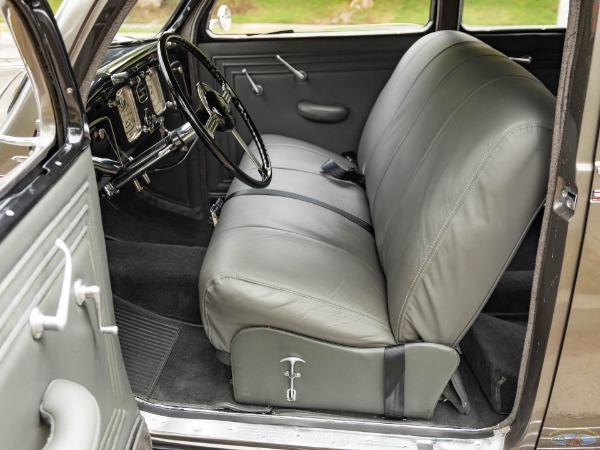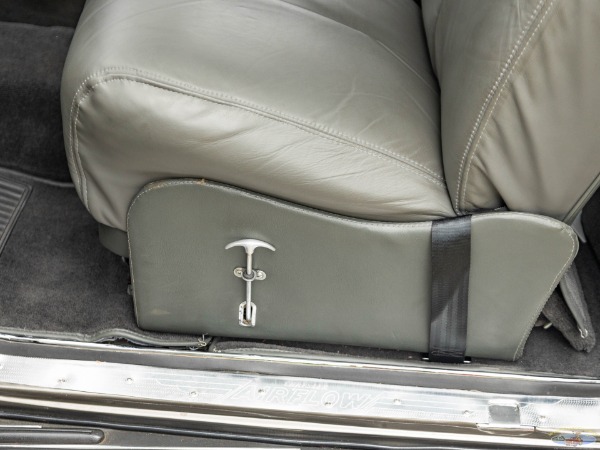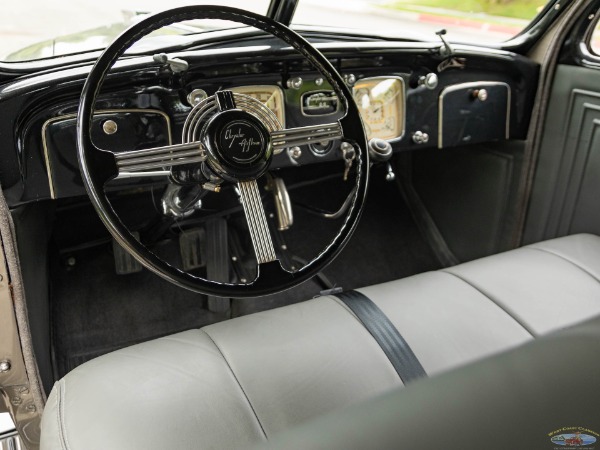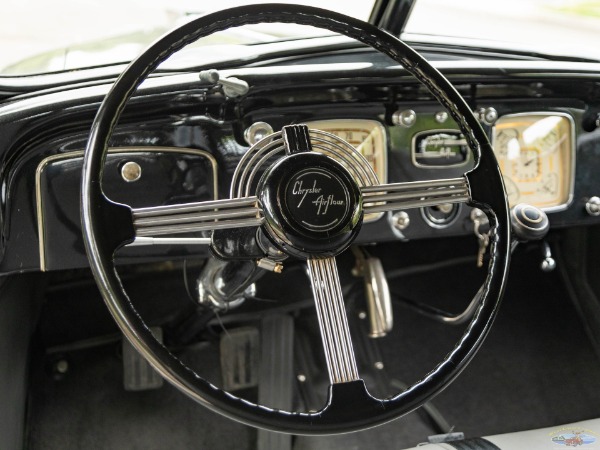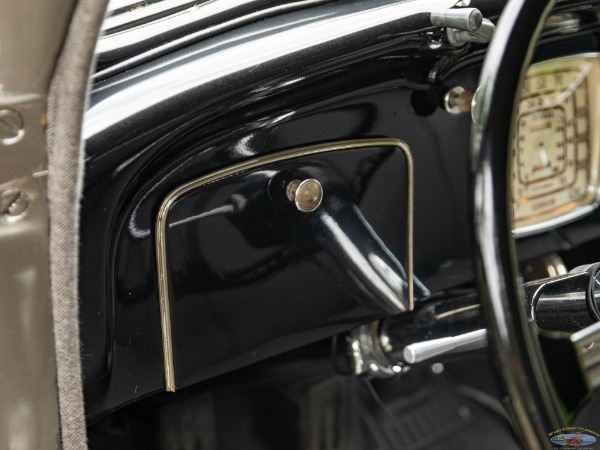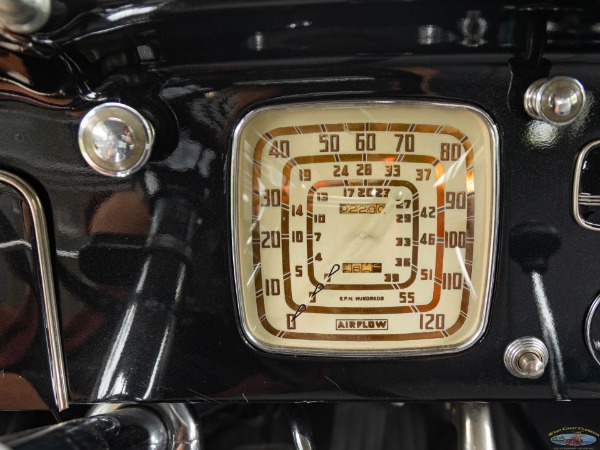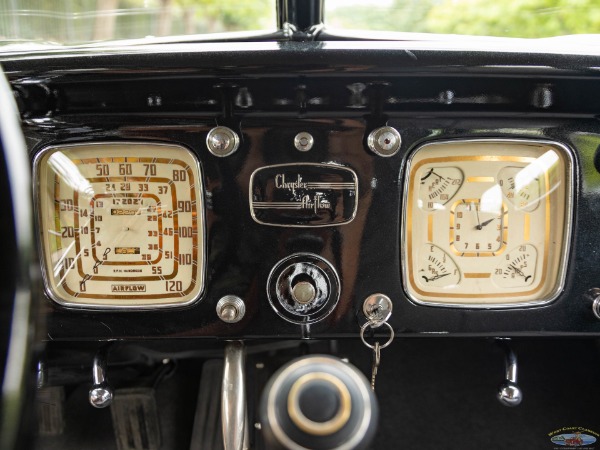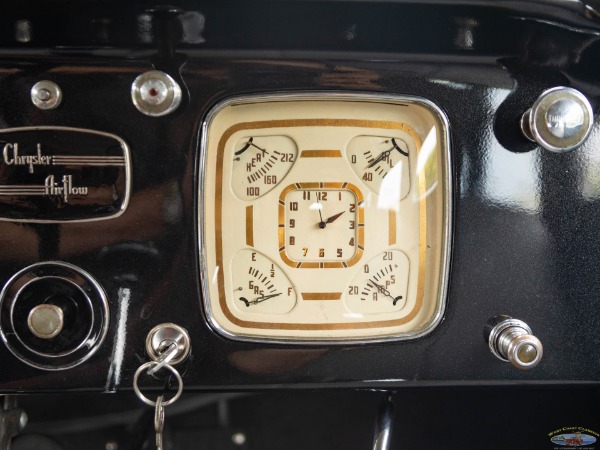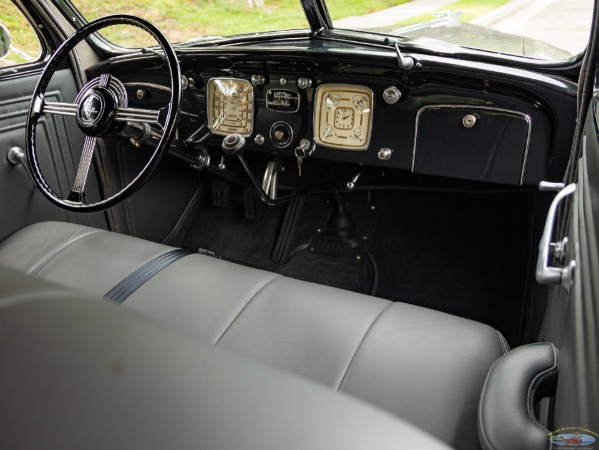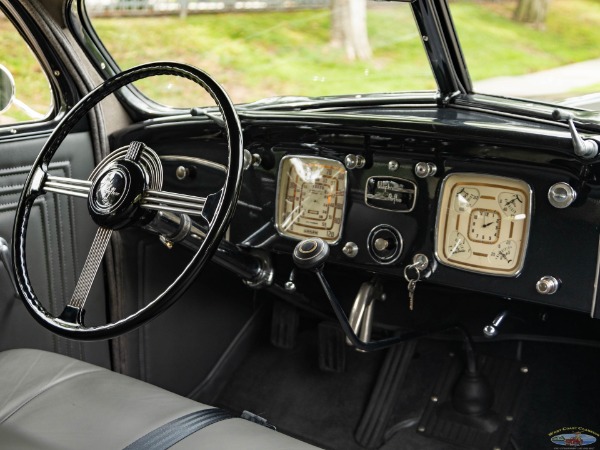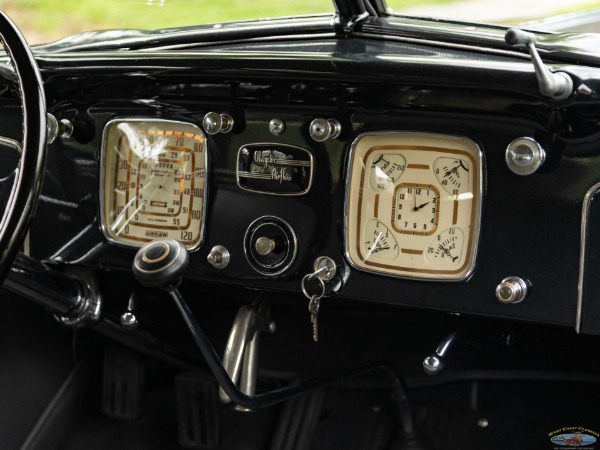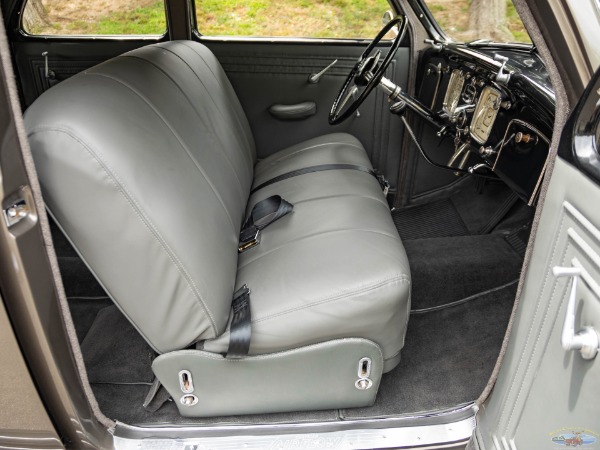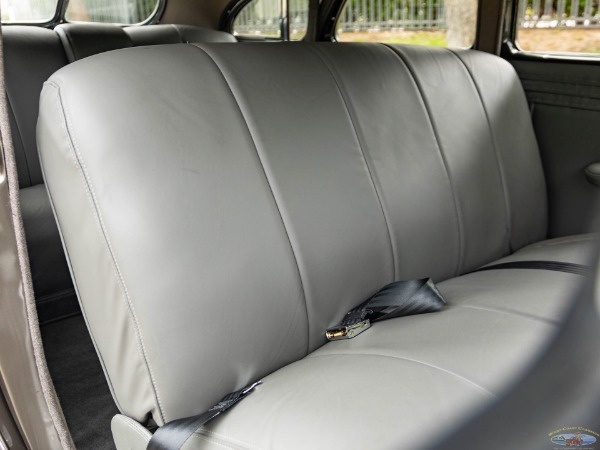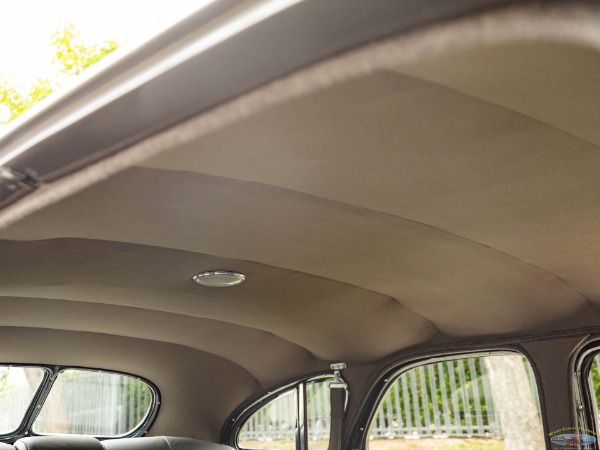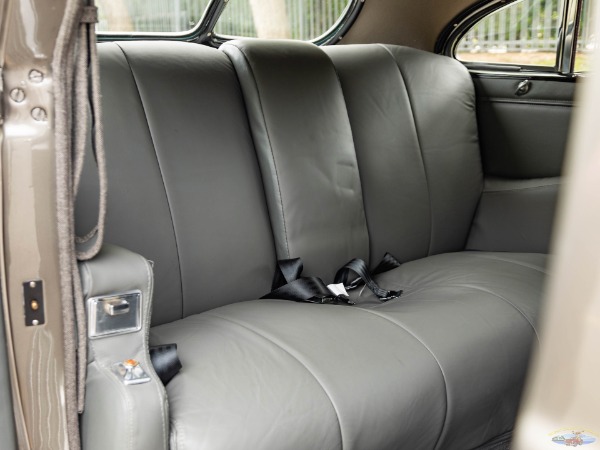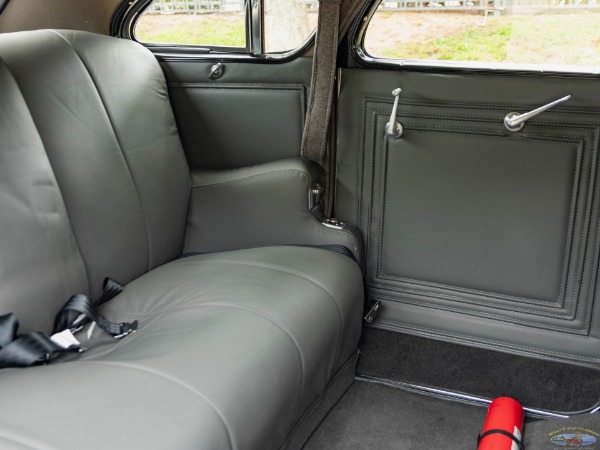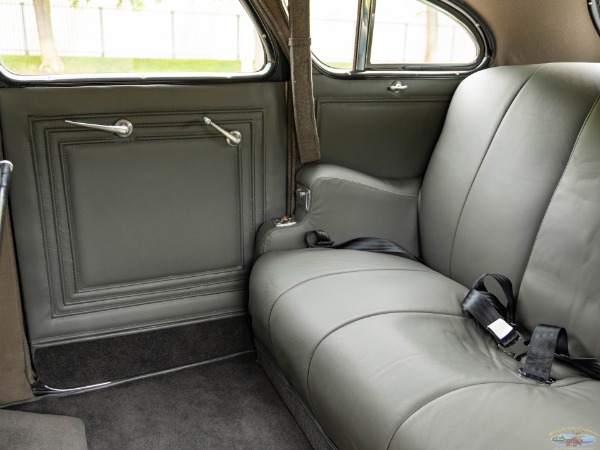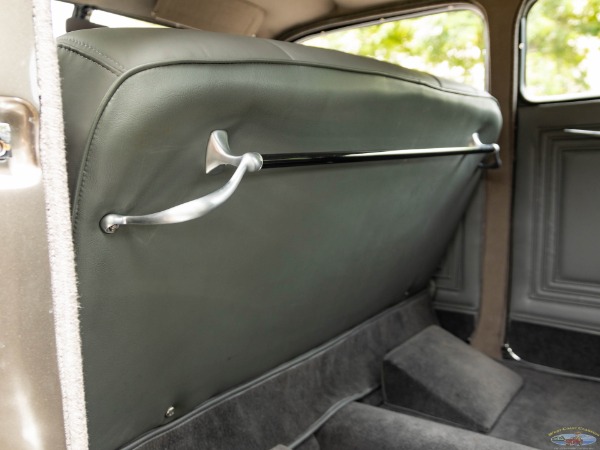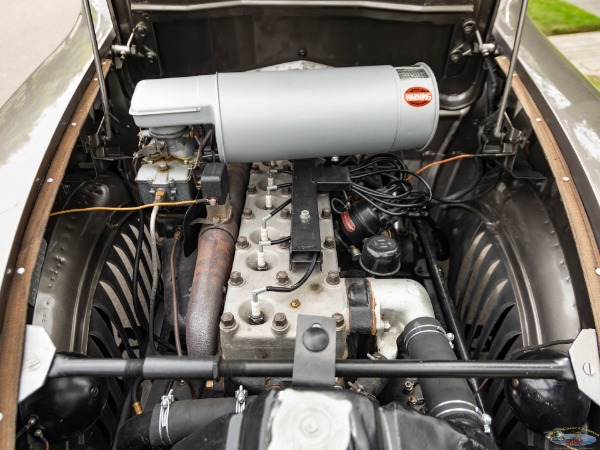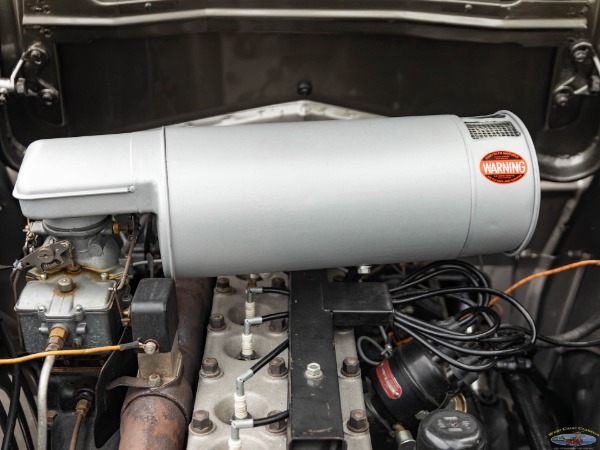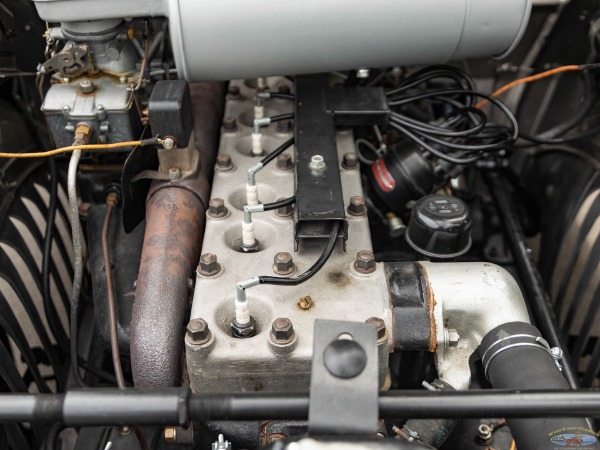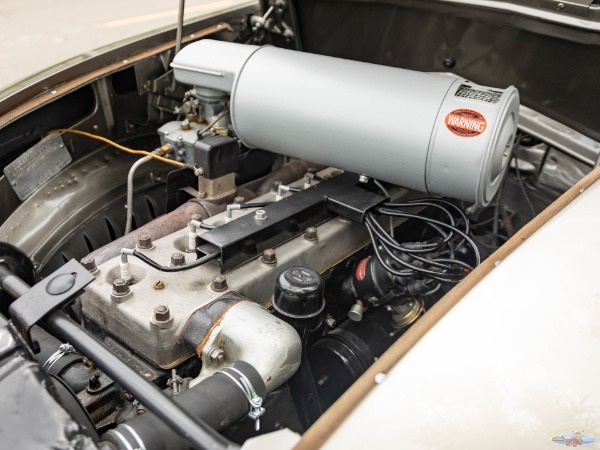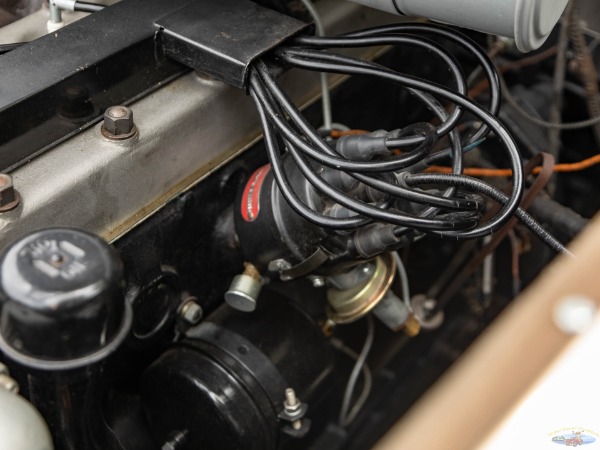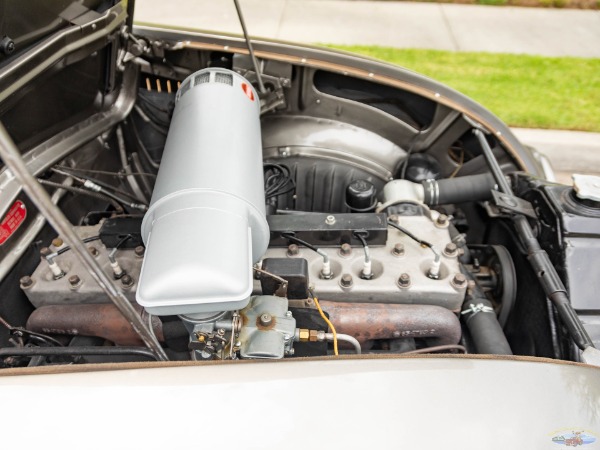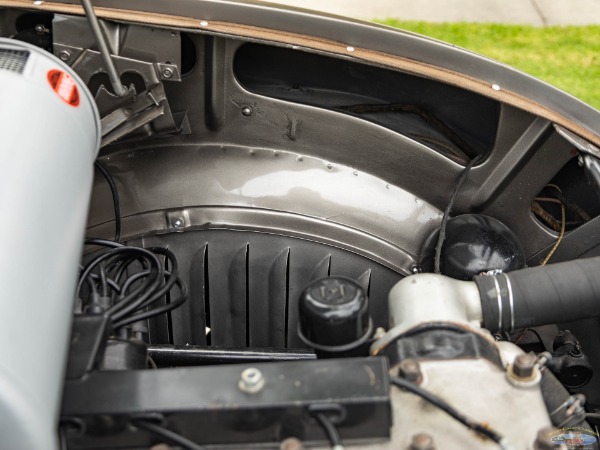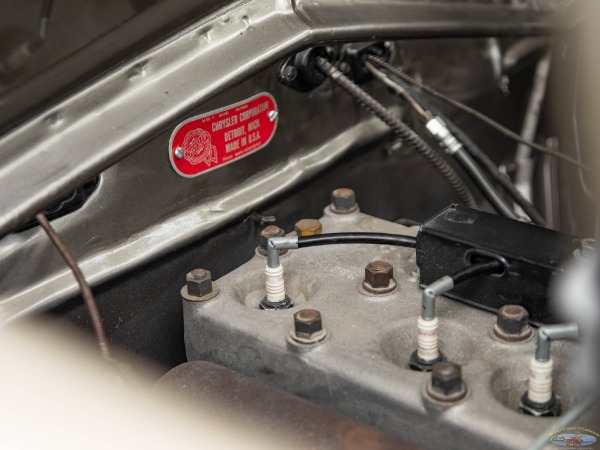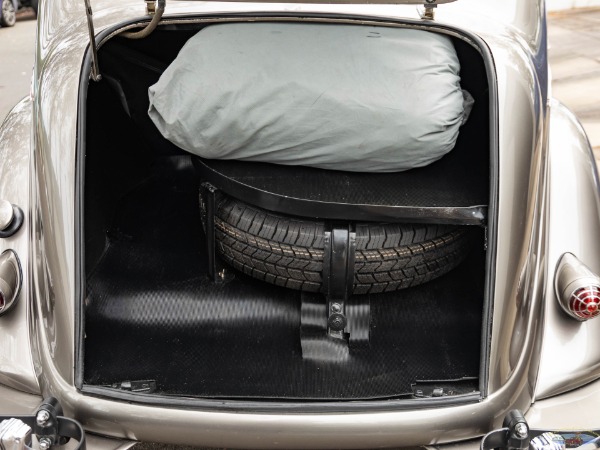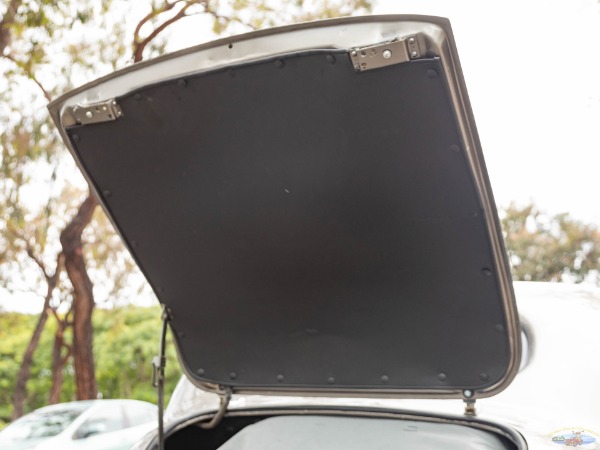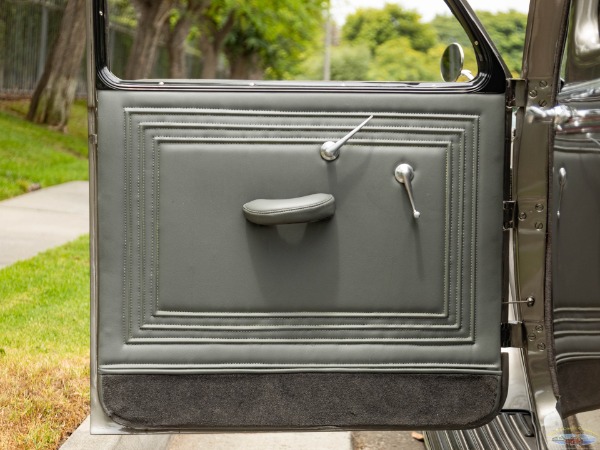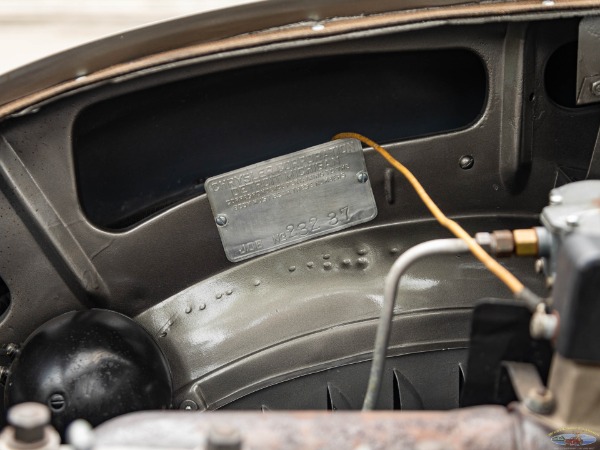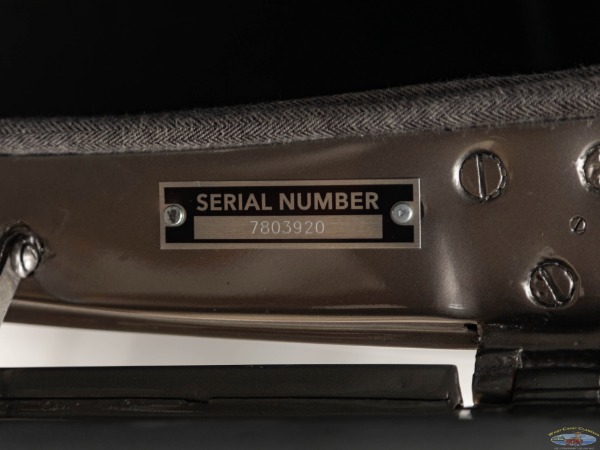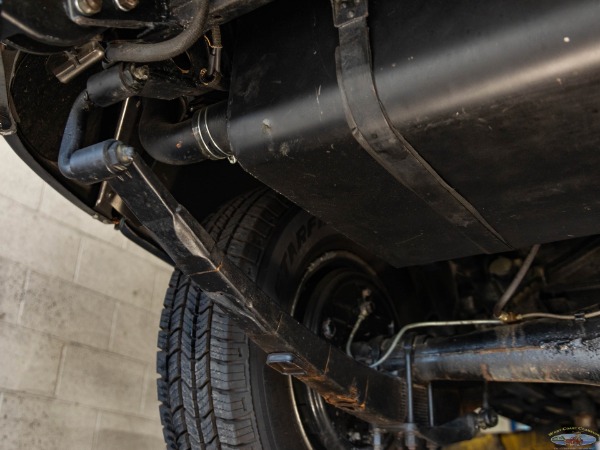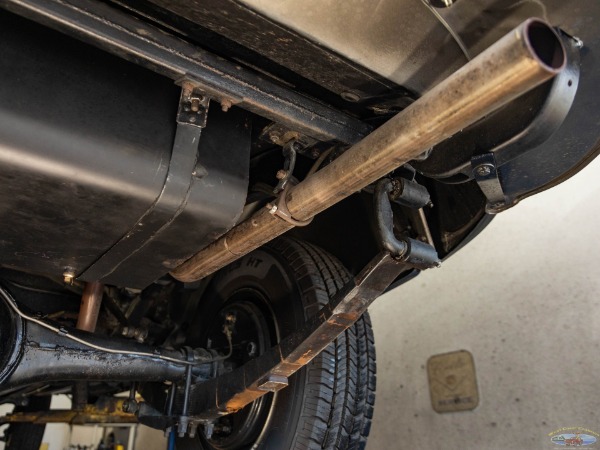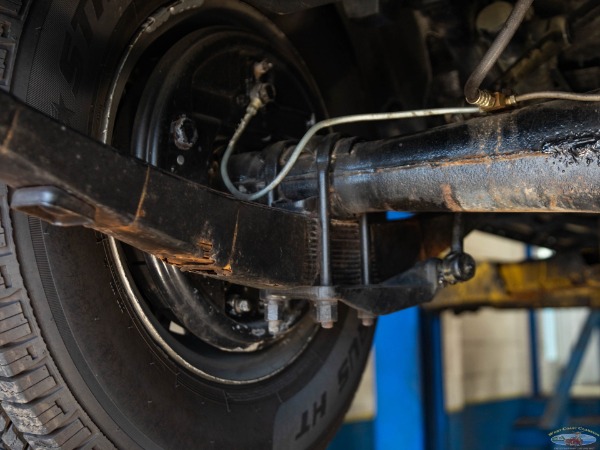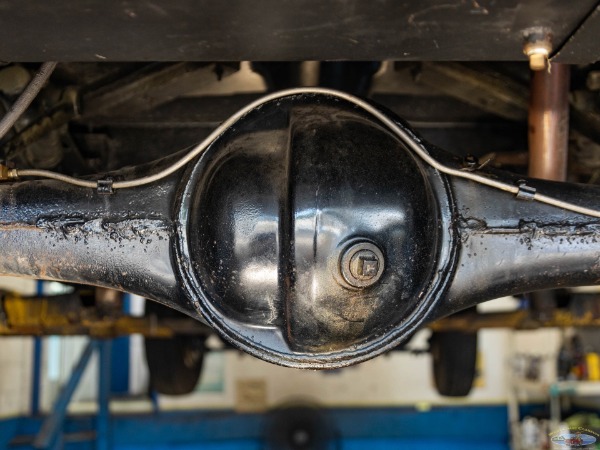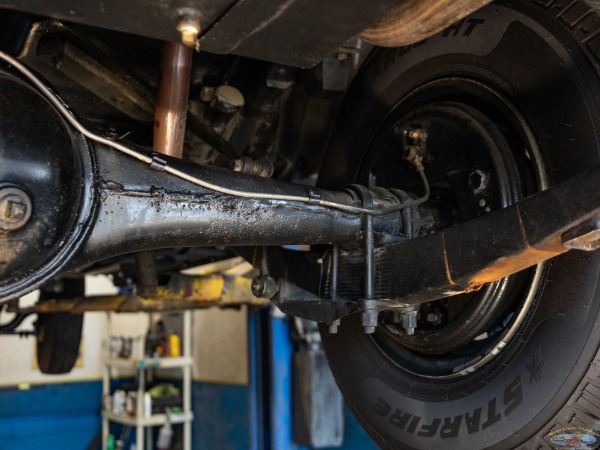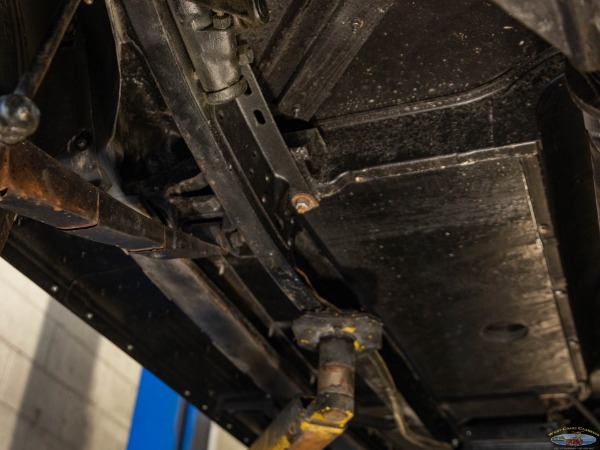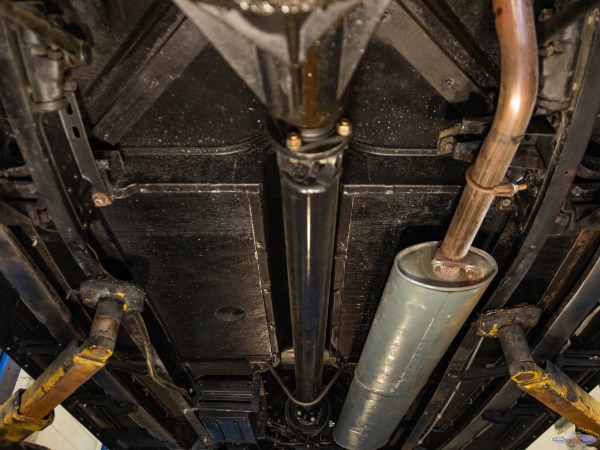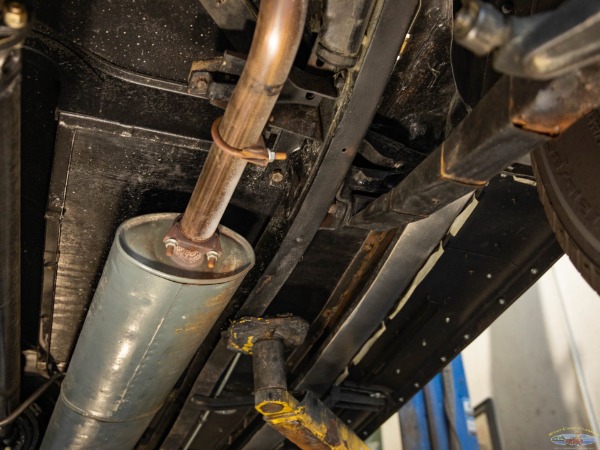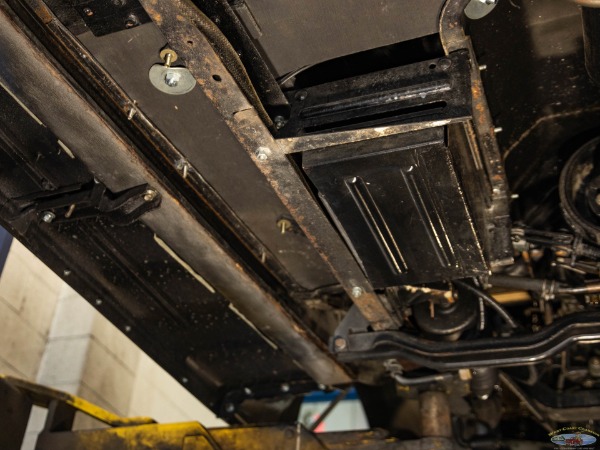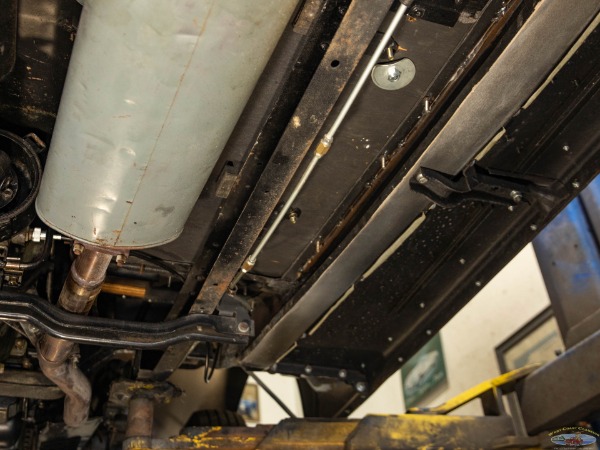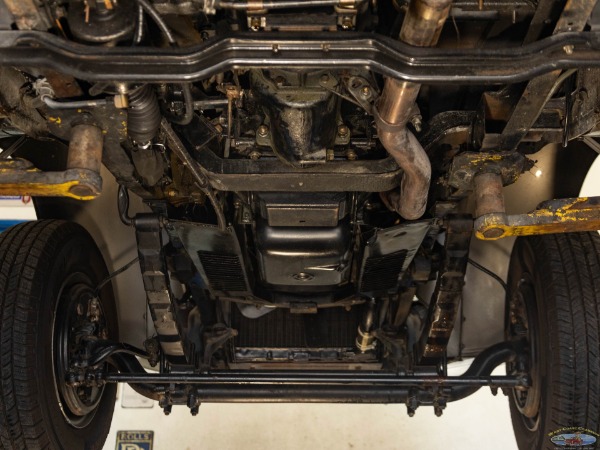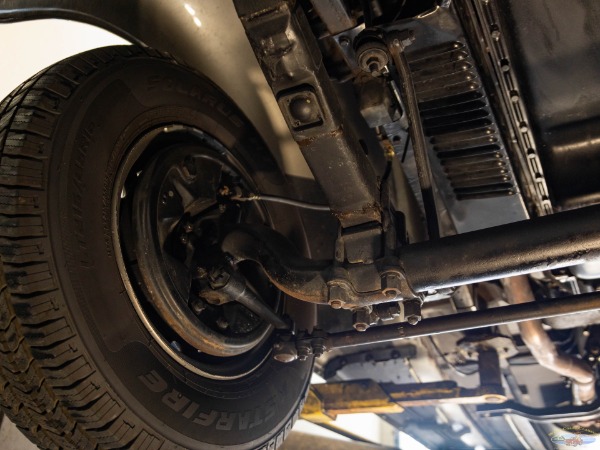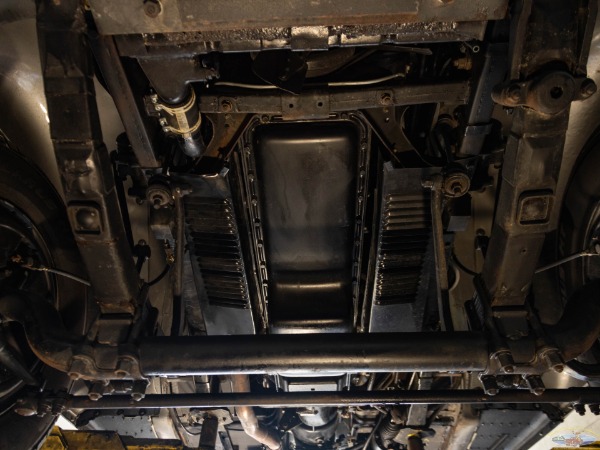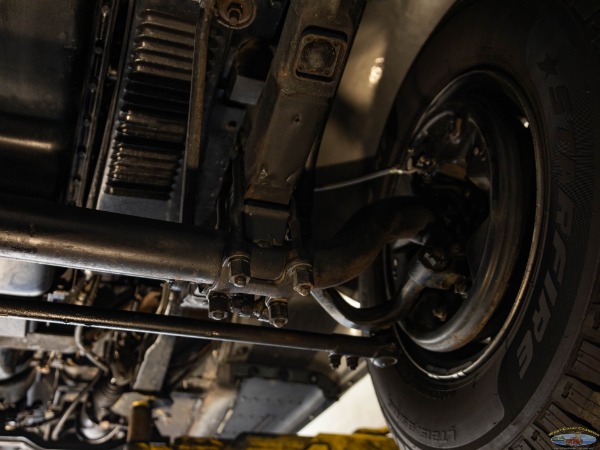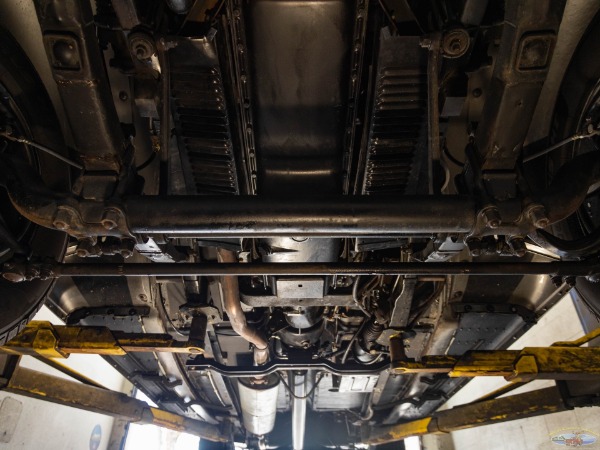West Coast Classics are proud to present an absolutely exceptional example of this extraordinarily rare 1936 Chrysler Airflow Series C11 Custom Imperial Sedan (1 of reportedly only 38 built in the sole 1936 production year and thought to be one of only two now remaining) with its original 323.5 CID inline 8 cylinder L Head engine matched to a 3-speed manual Warner automatic overdrive transmission.
In 1934 Chrysler introduced an entirely new kind of automobile, the Airflow. Chrysler engineers streamlined an entirely new automobile, testing the configurations in a wind tunnel, with the help of the legendary Orville Wright! These engineers also rearranged the structure of the new car for improved riding comfort to be the most modern of its day! By moving then engine forward and increasing the length of the front springs and the seats positioning between the axles, road shocks were sharply reduced on the passengers.
Six-cylinder Airflow DeSotos were available in 2-door coupes and 4-door sedan configurations. The larger Chrysler Airflows had the 8-cylinder variant engine and the Imperial model had a slightly longer wheelbase. The cars proved very expensive to build and the smaller DeSoto Airflows were discontinued after 1936 and the 8 cylinder Chryslers after 1937. Recent reports from the Airflow Club show very few survivors today.
Chrysler also offered two custom versions of the Airflow Imperials. The larger series, designated CW, were taller, wider and longer than the production cars and equipped with larger engines and heavier running gear and shared almost no components of the other models. Up to 100 Airflow CWs were built with about 8 know to still exist today.
Aside from the CWs Chrysler set aside a few of these Imperial models for LeBaron conversion to the 'Custom Imperial'. This conversion consisted on a 9" stretch of the chassis and an equivalent lengthening of the Imperial body, with the extra length for the rear passenger area. For 1936 the LeBaron cars were named the Series C11.
Chrysler historical records show that 75 serial numbers were set aside for the C11, 38 of them for the sedan and 37 for the limousine, which had a divider partition with roll down window separating the rear passenger compartment from the driver's seat. Chrysler shipping records show that only 62 were actually built and shipped.
The Airflow Club of America established in 1962 had reports of only 3 x C11s still known to be in existence. One was reportedly dismantled before 1968. One is a limousine currently in Australia and this subject C11 sedan car is the third. Therefore, it's likely to be the one surviving C11 sedan available anywhere in the world today!
The Chrysler LeBaron models (for 1936 the C11s and CWs) were sold as special order custom coachbuilt cars. Dealers or purchasers could order the cars with interior appointments and paint colors to order. In place of the usual exterior and interior trim codes shown on the body data this C11 shows only the order number. Authentic restoration therefore permits use of any period correct paint colors as well as fabric or leather trim.
Surviving information about C11s include sales brochures, maintenance manuals and parts lists, each of which provides specific details of the cars. The build history for 7809320 was obtained from the Fiat-Chrysler Historical Society and shows the car was shipped to 'J.B. Martin', a Chrysler dealer in Harrisburg, PA. The build date was June 22nd, 1936. The body number 231-64 was built by 'Briggs' and shipment was by boat. It was equipped with engine number C11-1072 and an overdrive transmission. Gear ratio was 4.33:1. Options on this car included a special steering wheel and six road wheels. Like all Airflows it had Duplate safety glass.
According to Airflow Club records 7803920 was first reported to the club sometime before 1969 in Lancaster County, PA. From at least 1969 until 1975 it belonged to Airflow collector and dealer Paul Stern, who sold it to Ken Curtis of Raleigh, NC. Ken sold it to Ray Harmuth Sr in 1992, some 17 years later. Mr Harmuth Sr had restoration work performed on the chassis and body by Gary Hoover of Alliance, OH. In approximately 2004, Ray Harmuth Jr, inherited the car from his father. When Mr Harmuth passed in 2019 his widow sold the car to Jon Clulow of Pasadena, MD and John Boyd of San Diego, CA. Included in the sale were many new and used replacement parts for the Airflow.
Mr Clulow has been a member of the Airflow Club for many years and is very experienced in Airflow restoration. He undertook to restore the car again using the parts it came with along with parts from his own extensive collection. Jon oversaw a complete professional engine overhaul on the original matching numbers C11-1072 engine, performed by Rockville Ring & Bearing in Rockville, MD. New bearings for cam, crankshaft and rods, valves, tappets, guides, pistons and rings were installed. The block was thoroughly cleaned and checked for cracks, cylinders were bored .020 over, the new crankshaft bearings were line-bored, and the block was decked. A newly cast, original mold alloy Airflow cylinderhead was obtained from the Airflow Club parts store. The transmission used was an overhauled unit taken from a driving Chrysler Airflow. New rubber parts, brake shoes, weatherstrips, motor mounts and miscellaneous other parts collected by the car's previous owner were installed.
Once the car was completely reassembled, the car was transported from MD to CA for the disassembly for body repairs and refinishing. The body was finished at 'AG Body' in El Cajon, CA. The repair began with complete removal of the old paint and body filler. The car was sent to a specialist sand and blasting shop where it was completely blasted. Once done it became clear that any previous rust issues had been satisfactory repaired. The body was aligned, smoothed, filled and blocked, then painted with two-stage paint in a metallic Bronze-Gray finish, a period correct color, yet contemporarily stylish. The paint was color sanded and buffed to a high gloss. Meanwhile all exterior bright metal was sent to professional polishers and platers for refinishing. In Spring 2021 the exterior trim was installed and new Airflow Club reproduction hubcap skins were installed. New tires were purchased and mounted on the refinished wheels. Interior brightwork was finished in the Custom-Imperial appropriate satin chrome by 'Artistic Silver Plating' in Long Beach, CA and the dash was reassembled with refinished instruments and brightwork. Wheel trim and original style sunbursts in 'Casino Red' were applied by 'CSNRS Color Studio' in Santee, CA, who also refinished the steering wheel and radio blanking plate.
A new interior was constructed by Armando Moran of San Diego. Seat cushions were rebuilt and upholstered in a Blue'Gray leather. Matching door panels and wool headliner were also fabricated and installed. A coordinated Dark Gray was selected for the new carpet. Interior metal trim was refinished in Tuxedo Black. Armando followed the detail patterns from two original door panels that came with the car, and he fabricated wind lace, arm rests, visors, and rear seat passenger grab straps to the original patterns. He also finished the trunk and installed correct matting. Photos of the restoration from start to finish are available and will be included in the sale of the car.
The car has been shown at several judged meets since the restoration was completed. In two Spring 2022 judged shows; the first in Lake Las Vegas, NV (Antique Automobile Club of America) and the second in Rancho Santa Fe, CA (Classic Car Club of America) with the car winning FIRST IN CLASS at both shows, qualifying it for Senior Division in both clubs! At the 2023, 58th National Meet of the Airflow Club of America in Cambria, California, the car was awarded Best in Show and the Walter P. Chrysler Bowl.
Stats include:
323.5 CID Inline 8 cylinder L Head
130HP @ 3400 RPM, 250 lb ft @ 1600 RPM
Bore 3-1/4 in. Stroke 4-7/8 in
Main bearings: 5
Compression 6.5:1 std; 7.45:1 138HP optional
Material: cast iron block
Aluminum alloy cylinder head
Lubrication; pressure to all bearings excluding wrist pins
Carburetor: Stromberg EE-22
Transmission: 3 speed manual with Warner Automatic Overdrive
Differential: 4.33:1
Wheelbase: 137"
Brakes: 4 wheel hydraulic with vacuum power assist. 13" drums
Tires: 7.50 x 16
One of the last known remaining examples
One Of Only 38 C11 Custom Imperial Airflow Sedans Produced
Considered the most influential car of the 1930's, the Chrysler Airflow was the brainchild of Chrysler engineer, Carl Breer, who put into it the most modern concepts of automotive and aviation design. Airflow bodies were constructed around a cage-like steel girder network, to which the body panels were welded. The body and chassis were one integral unit, making the Airflow the forerunner of unibody construction. The unibody was so strong, that in a widely reported and now infamous publicity stunt, an Airflow was driven off a 100-foot cliff, bounced down the cliff face, landed on all four wheels, then promptly driven off under its own power.
The Custom Imperial was powered by Chryslers largest 323 cubic inch in-line eight, rated at over 130 horsepower. Wheelbase was a huge 137 inches. Weight was approximately 2 tons. 1936 starting price: $2,475. (A huge figure in that depression year). Although years ahead of its time, its advanced, extreme styling, and high cost hurt sales of the Airflow. Only 38 of the model you see here were built, making this a very rare car, indeed.
Chrysler's 1934 Airflow was a breakthrough in design. It incorporated a number of highly unusual and technically advanced features. Its breakthrough streamlined shape was developed in Chrysler's own wind tunnel. The wheels were located in the far corners of the body and the engine far forward to improve the ride. The chassis and body were a rigid, integrated structure. Regarded today as a milestone in engineering and an important example of Machine Age design, it proved to be more advanced than the American market, still struggling with the Depression in the middle years of the Thirties, could accept. Chrysler then did what it could to recoup its investment, retaining the Airflow's basic design and structure but giving it a more conventional look.
Produced by Chrysler from 1934 to 1937, the Airflow was the first full-size American production car to use streamlining as a basis for building a sleeker automobile, one less susceptible to air resistance. Today the Airflow is recognized as the most revolutionary and influential car of the 1930s. When it was introduced in 1934, it offered advanced features such as a wind-tunnel tested aerodynamic body design and unitized construction.
This delightful cruiser is a stunning example of Chryslers breakthrough art deco design and engineering. Though its Airflow was a commercial failure, Chryslers brave attempt at innovation made it one of the most important vehicle of the 1930s. Not only did the Chrysler Airflow lead the way in terms of aerodynamics streamlining as it was then called it was also among the first cars to incorporate a lightweight construction that presaged todays unibody vehicles.
The revolutionary concept was born when Chrysler engineer Carl Breer noticed the similarity between the shape of airplanes and birds, and he mused how archaic auto design was in comparison. With fellow Chrysler engineers Fred Zeder and Owen Skelton, he went to aviator Orville Wright, who understood more than a little about aerodynamics, to test models in a wind tunnel. The result was the Airflows ground-breaking streamlined design, which was sleeker and set lower to the ground than other American cars. The innovations didn't stop there. By moving the engine over the front axle, the Airflow gained additional interior space, while seating passengers between the front and rear wheels improved ride quality. The Airflow was a technological marvel with automatic overdrive and raked safety glass windshield.
Introduced at the 1934 New York Auto Show, the eight-cylinder Airflow caused a sensation. Orders for the revolutionary car poured in, and the Airflows complex construction was rushed. It eventually required expensive new tooling, which caused major assembly delays. After the initial spurt, sales were slow, and Chrysler ceased production of the landmark model in 1937. Despite the Airflows market failure, other manufacturers soon adopted the lighter weight steel body construction and better aerodynamics it pioneered. The spirit of the Airflow is a silent but important part of every car we drive today.
In summary, this striking classic and possibly the only remaining 1936 Chrysler C11 Imperial Airflow Sedan has very few miles since its full restoration completed under the supervision of one of the marque's foremost experts and enthusiasts. As offered, it is fully tuned, mechanically sound, and runs and drives wonderfully. Beauty, rarity, and splendor all come together in this magnificent Chrysler from the very heart of the classic art deco era of the 1930's and this highly desirable example is ready for touring or showing enjoyment as desired.
https://static1.squarespace.com/static/58c7465edb29d6e8758c306f/t/631a103b17709333ba05b3eb/1662652477913/Airflow.pdf





